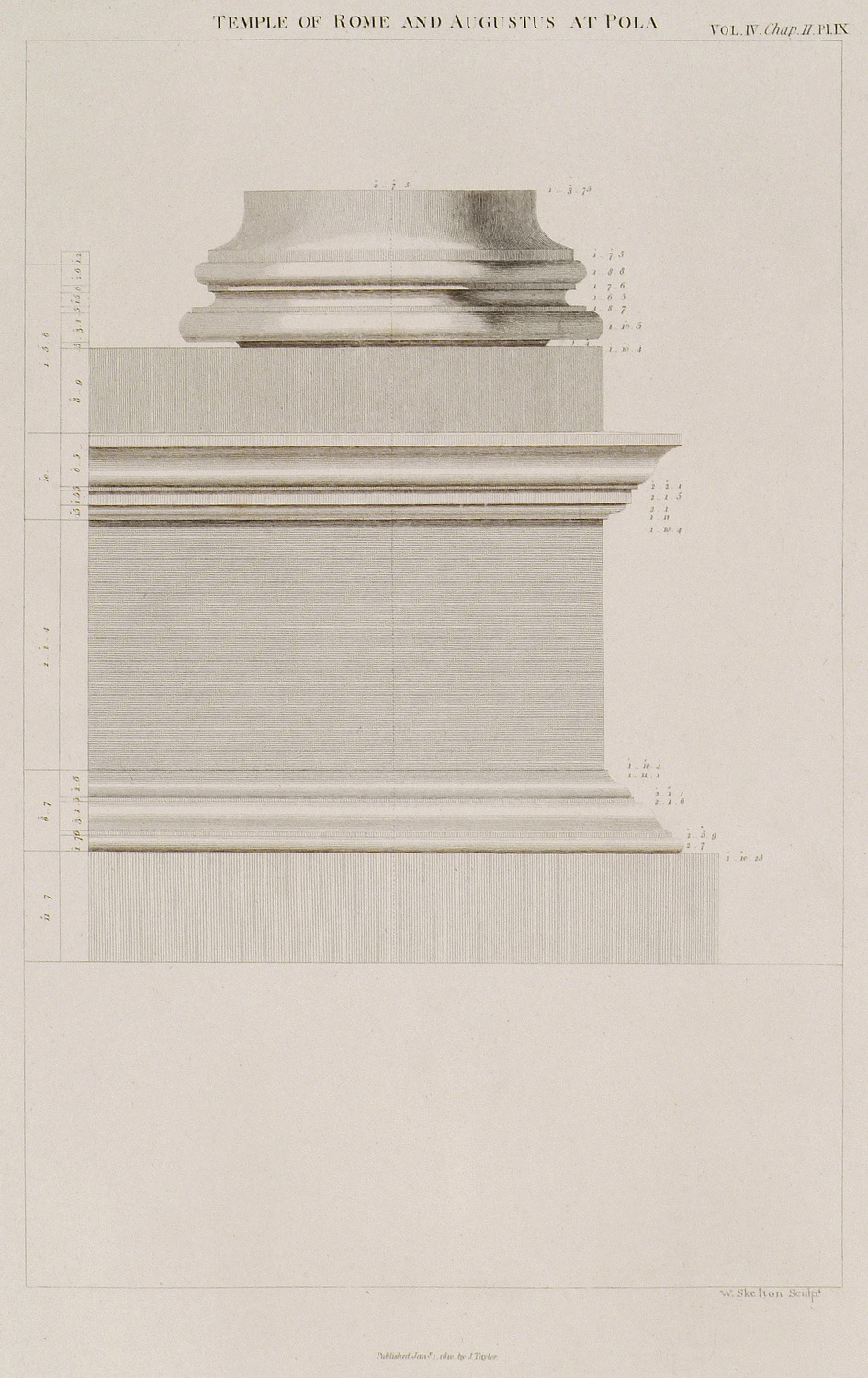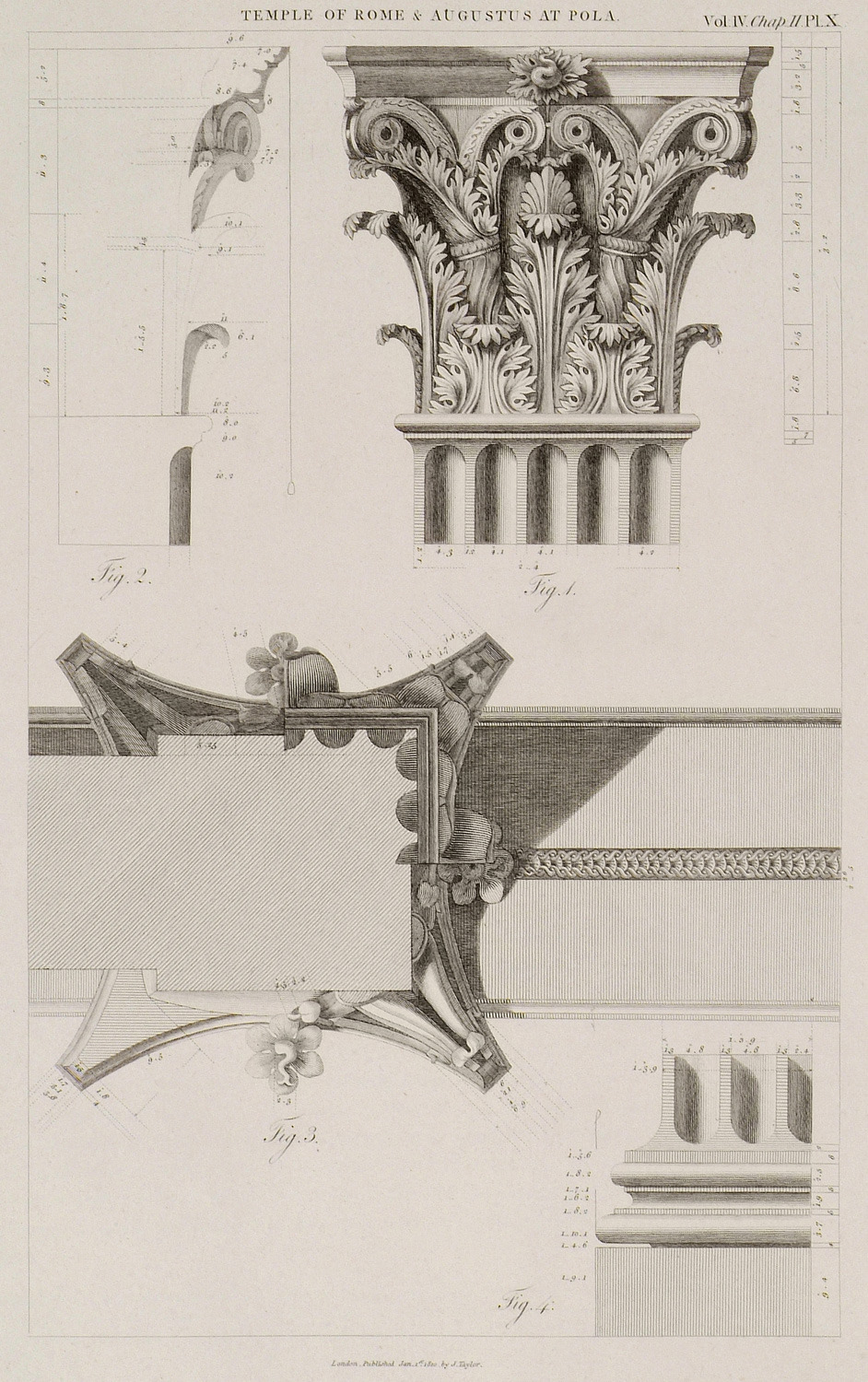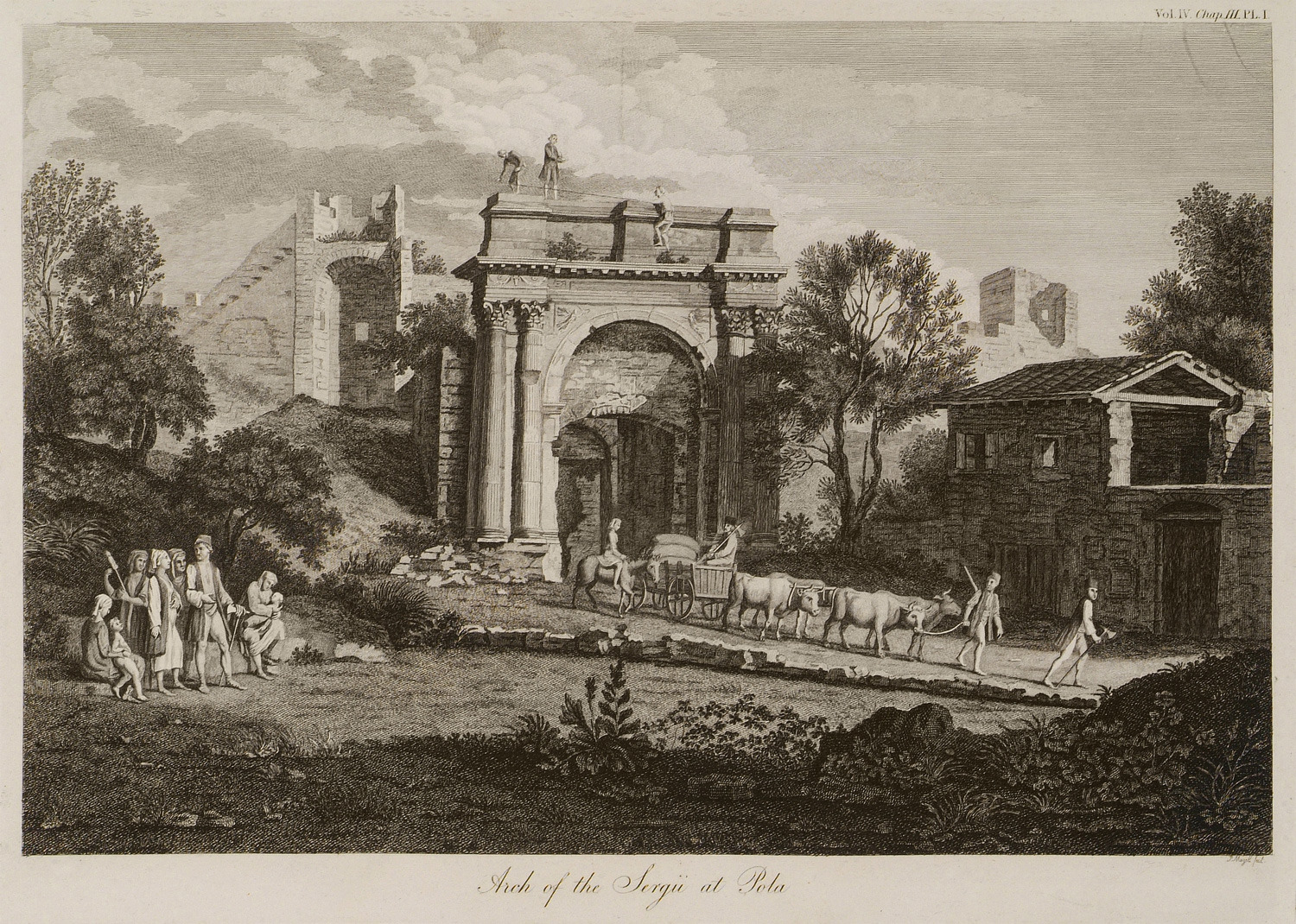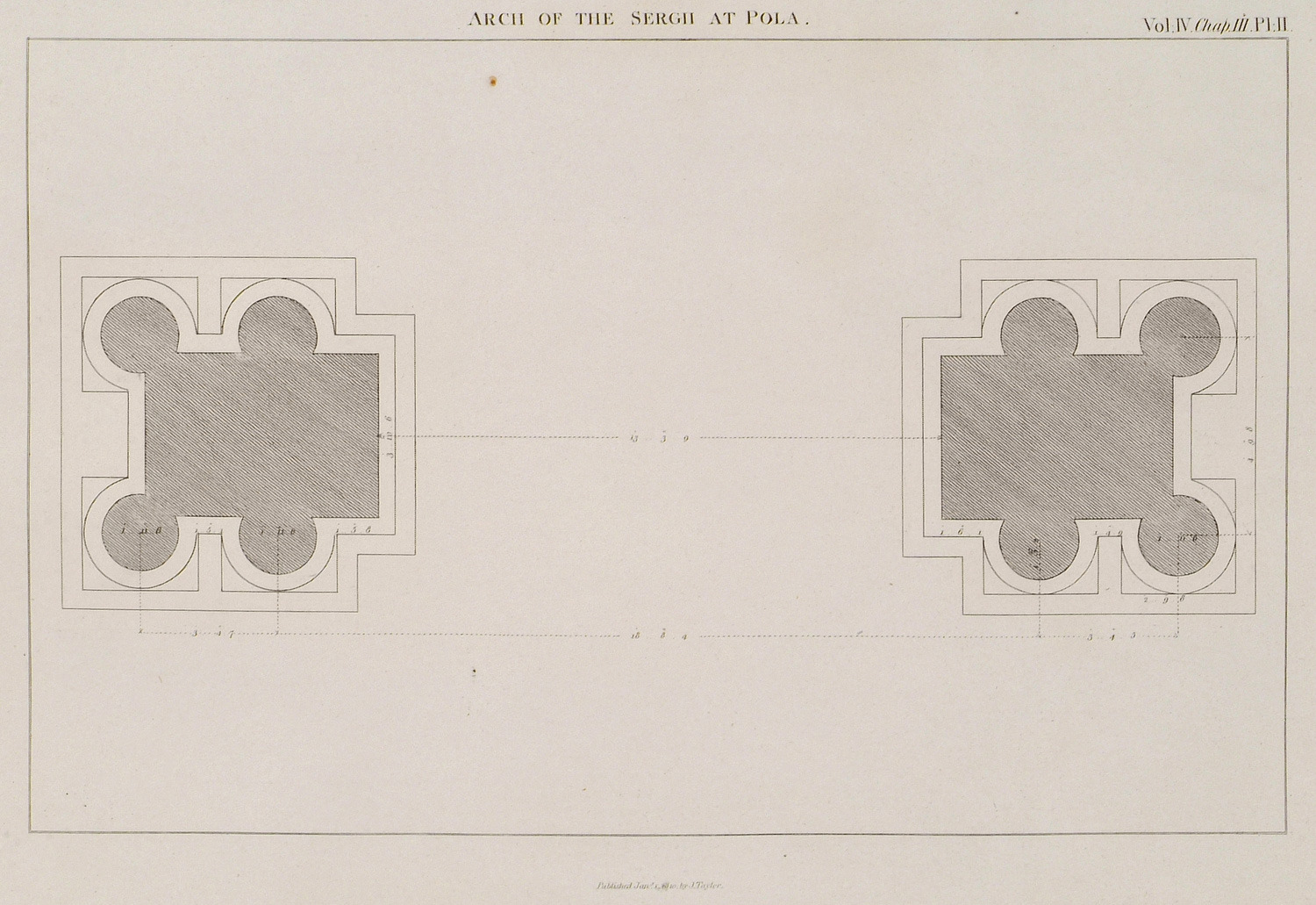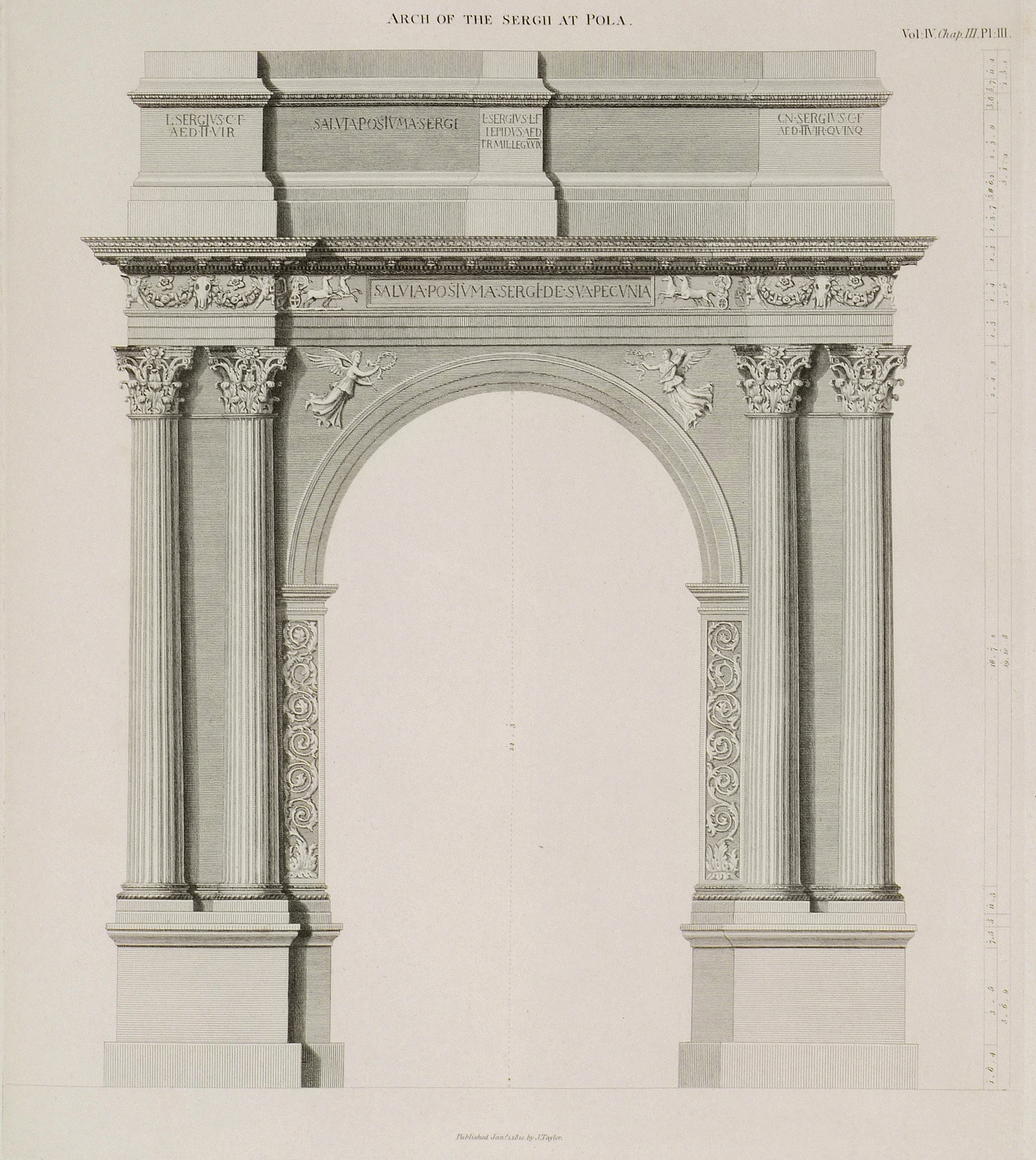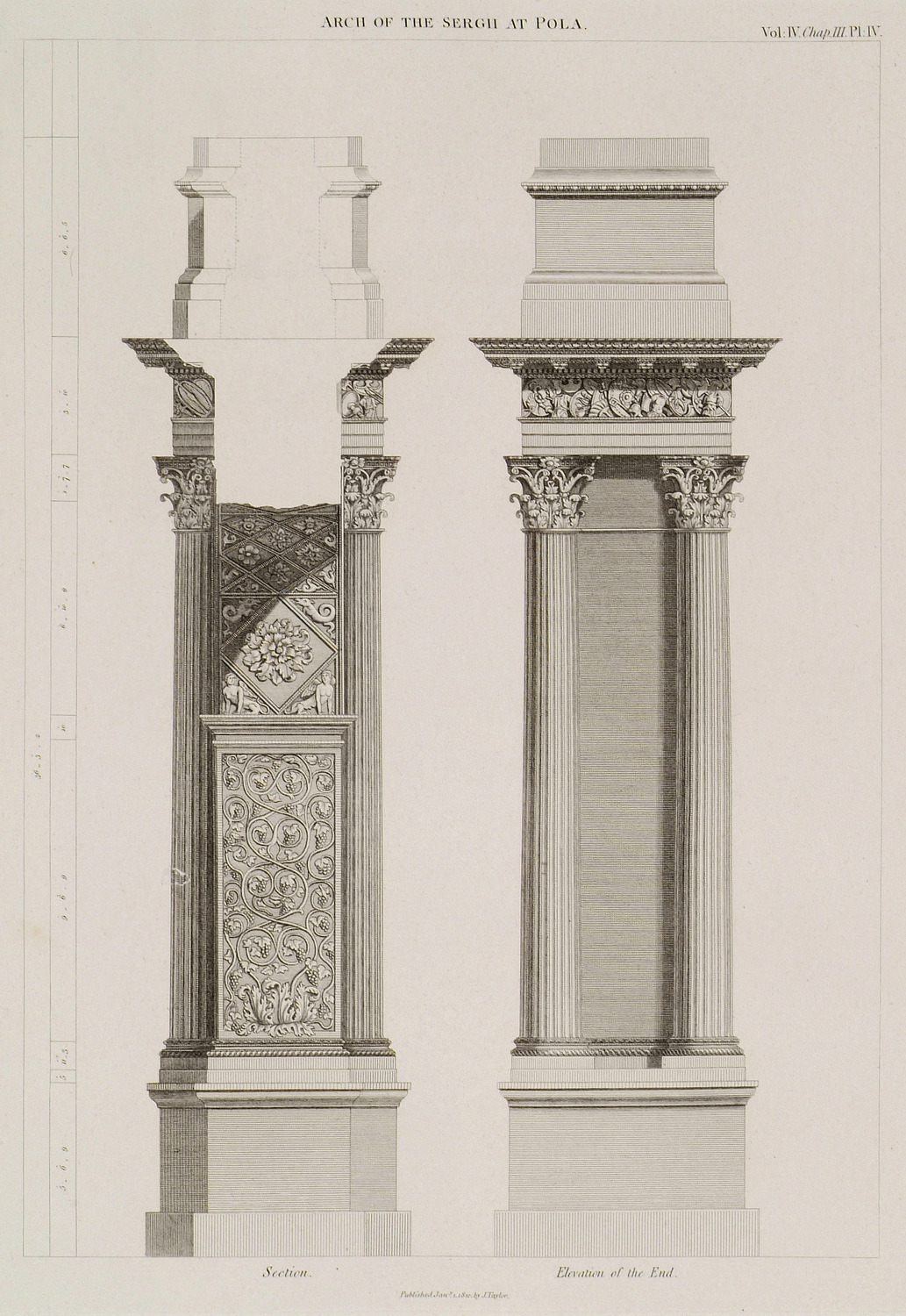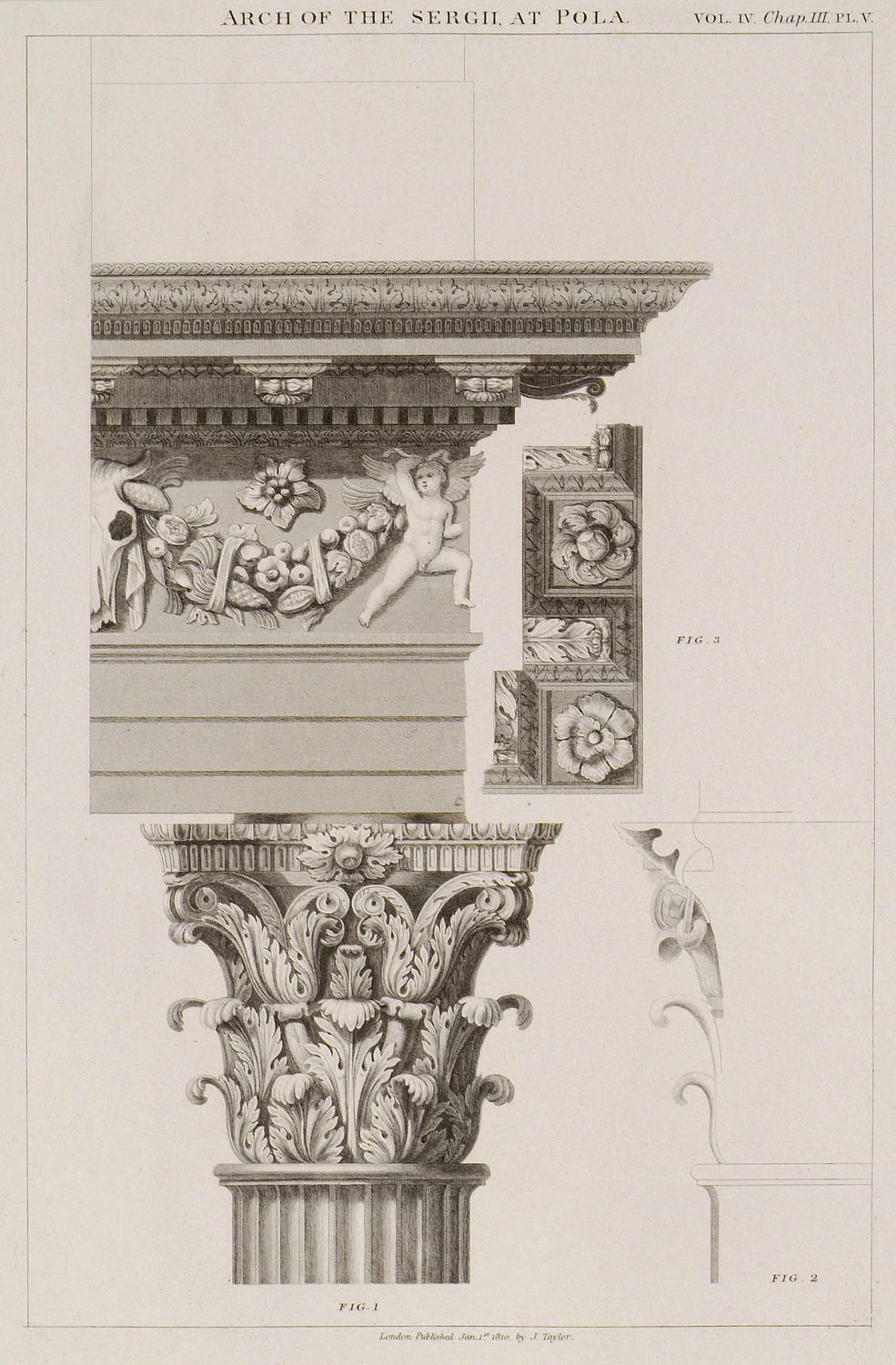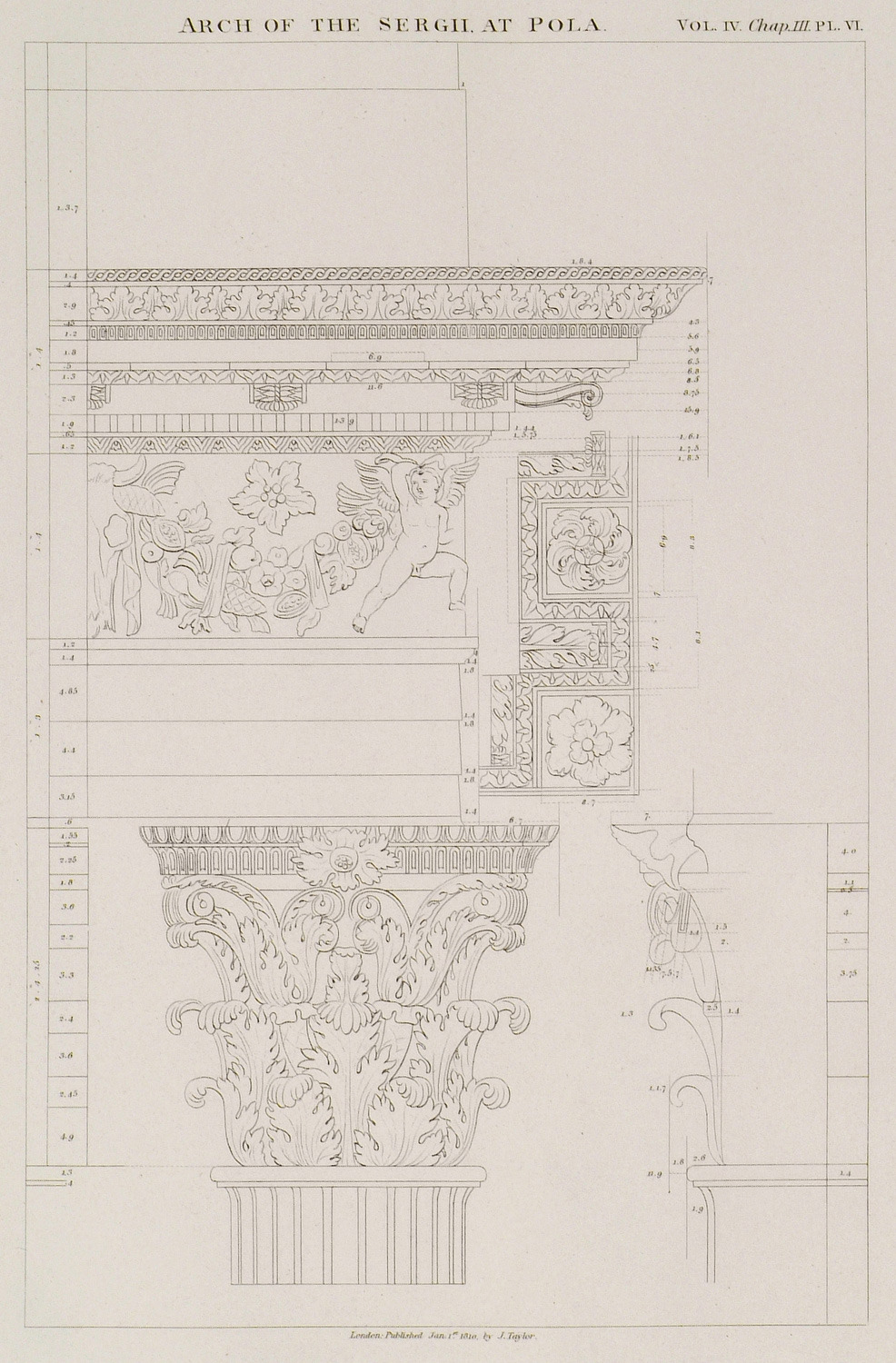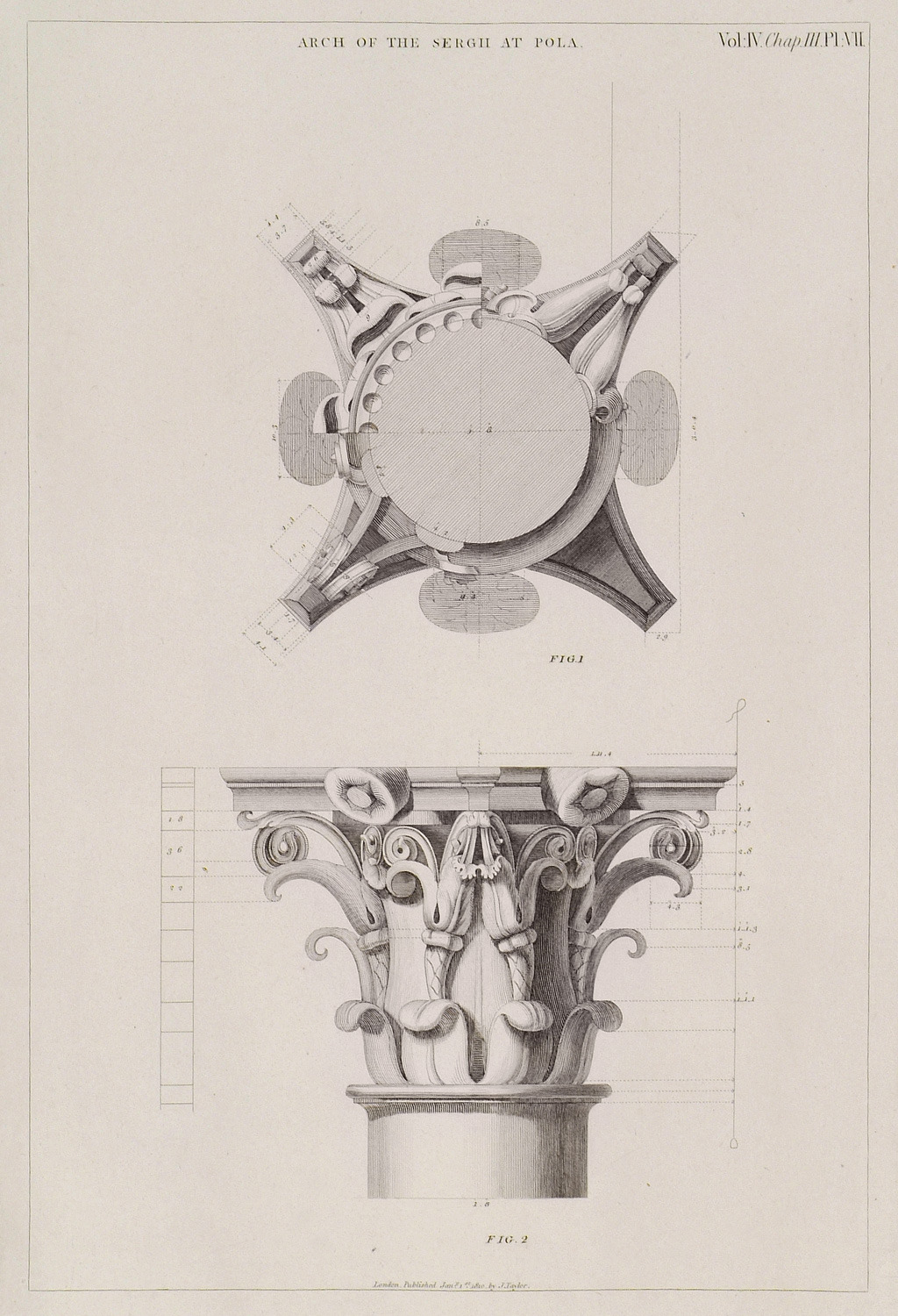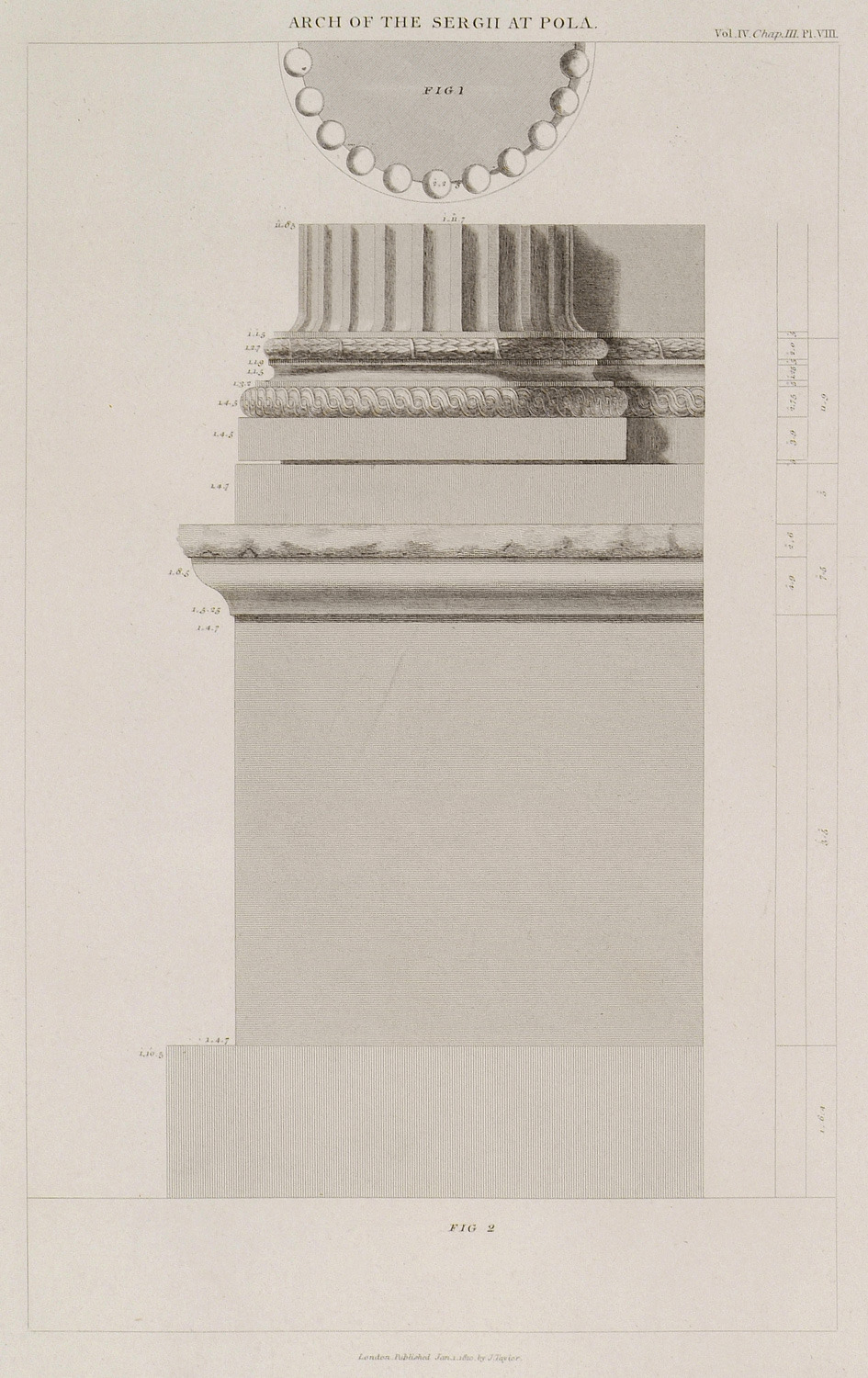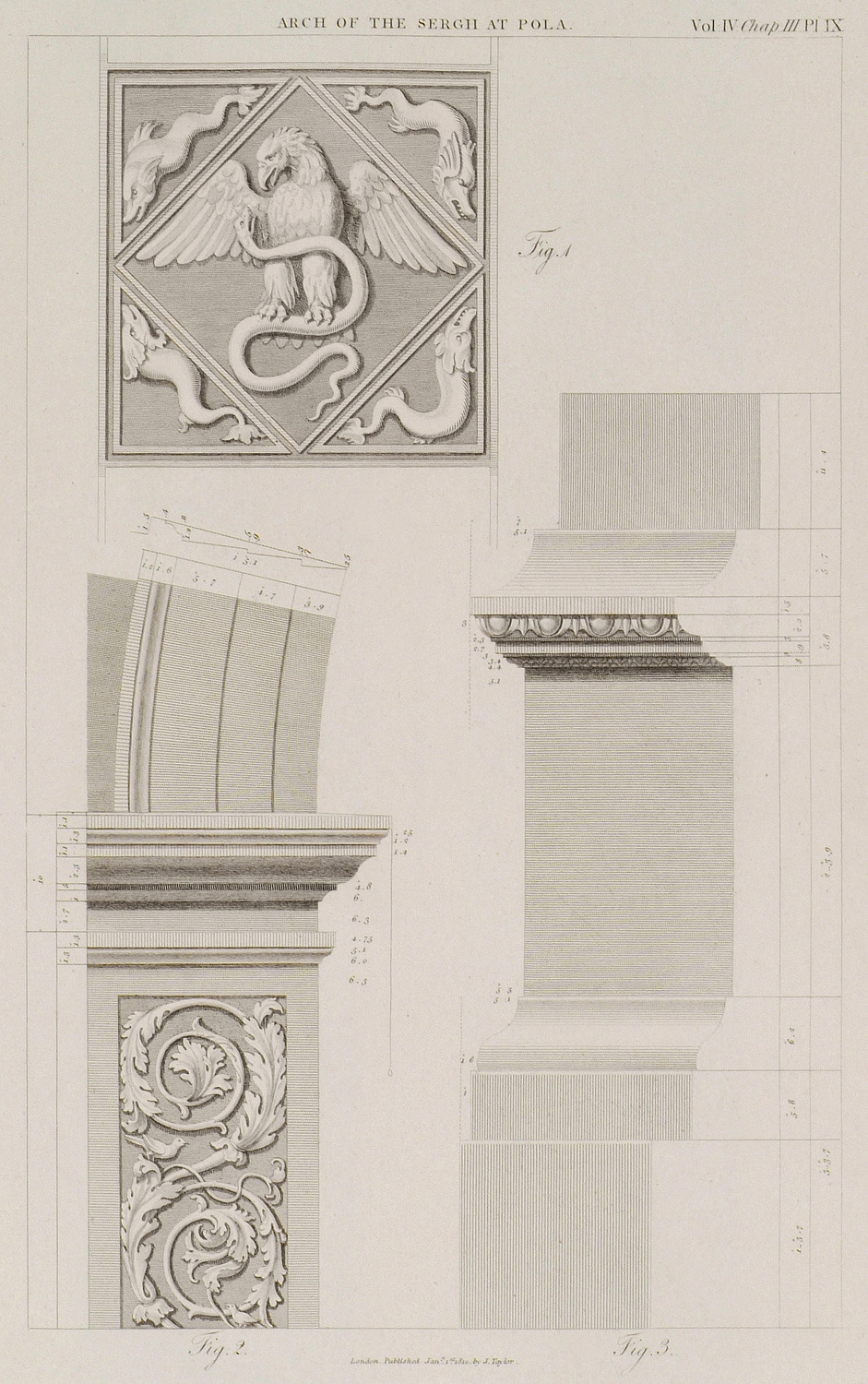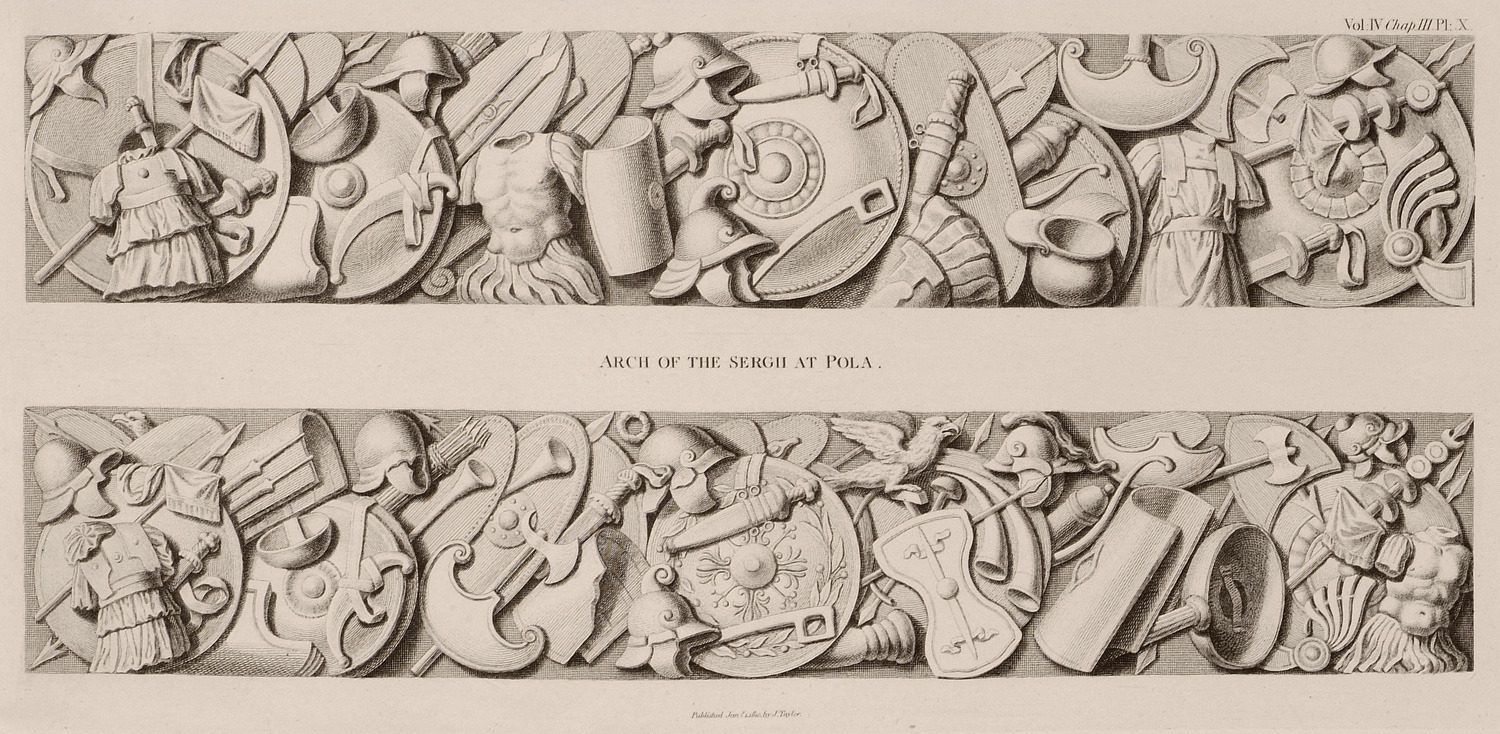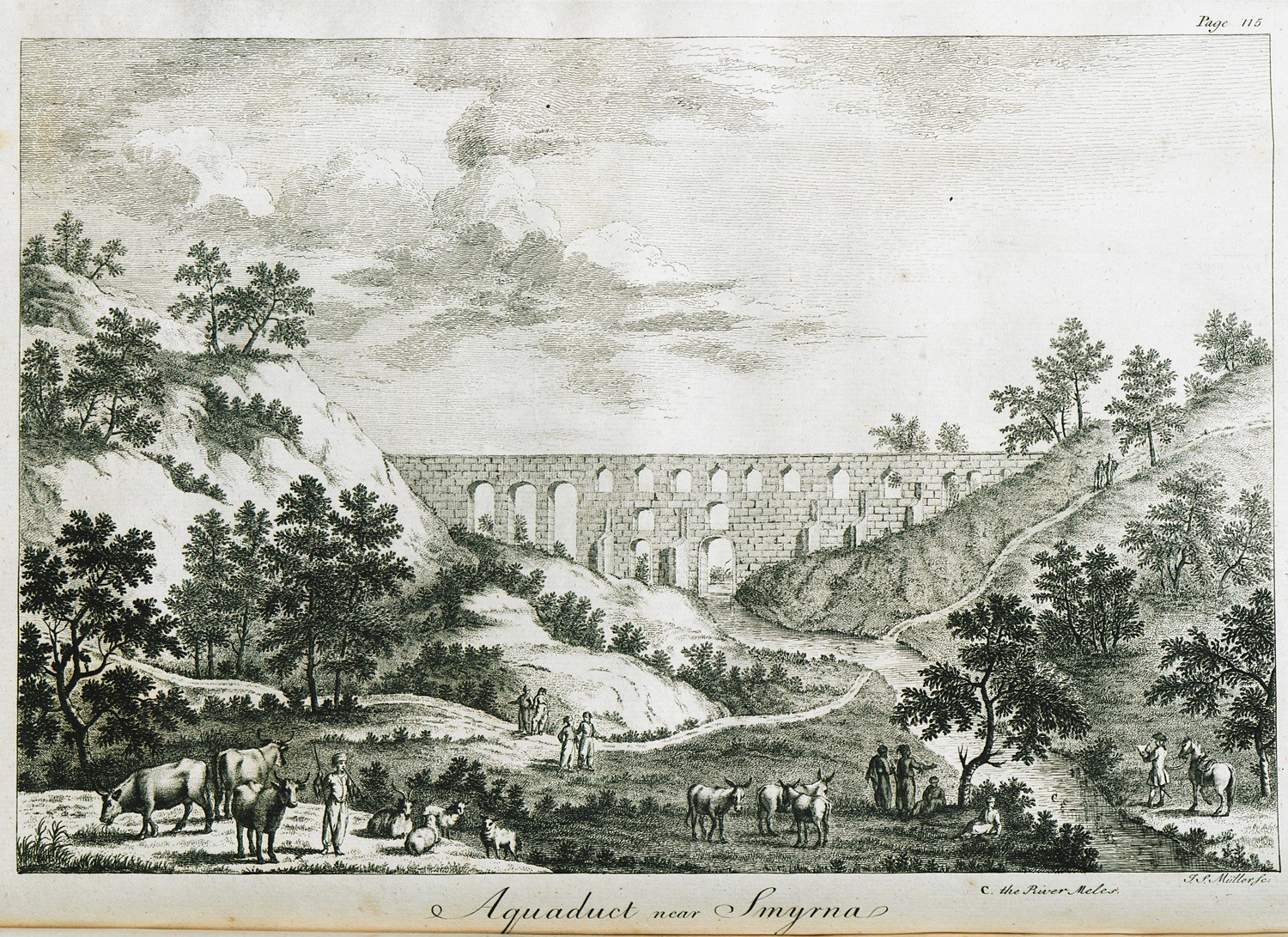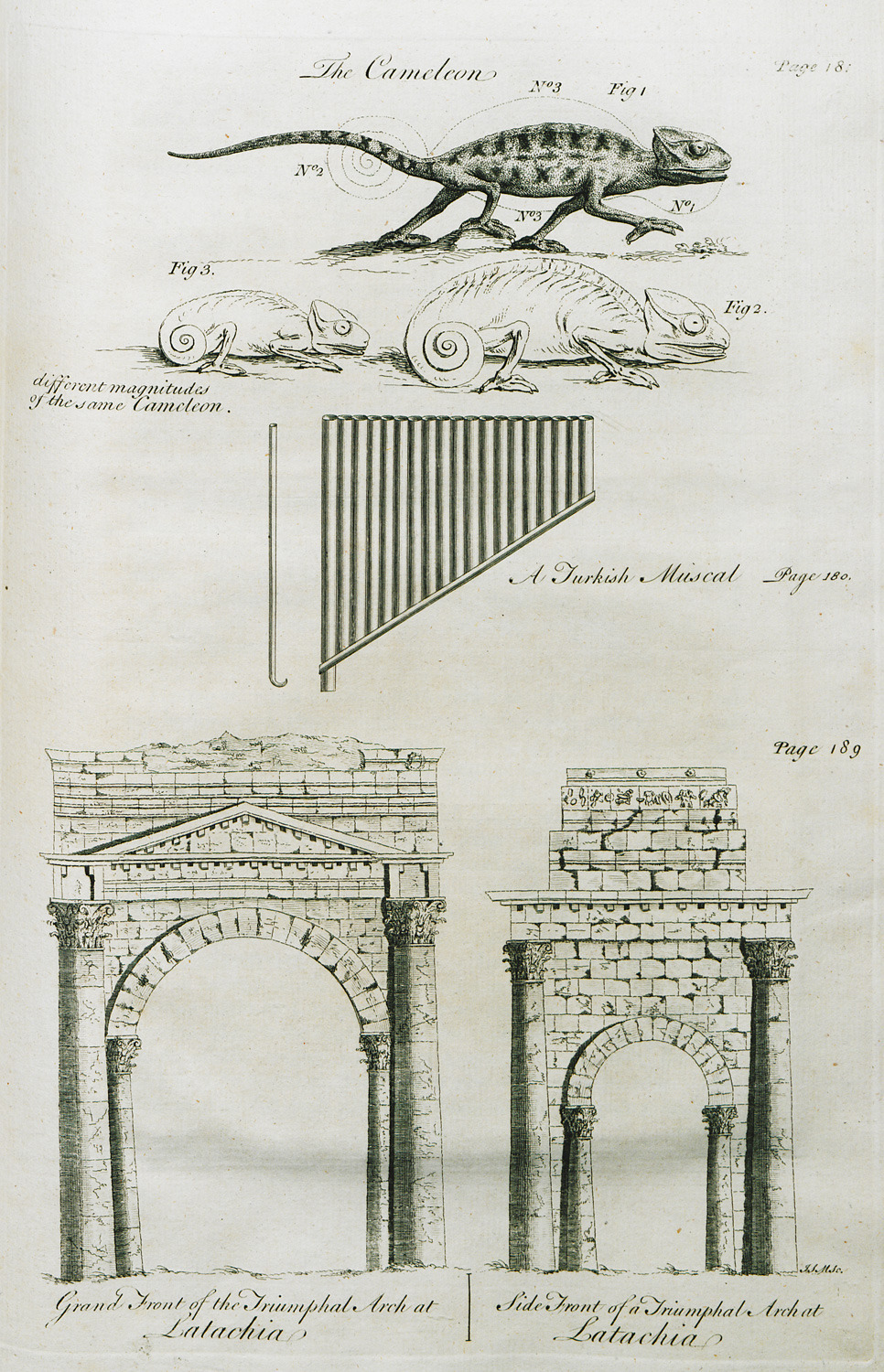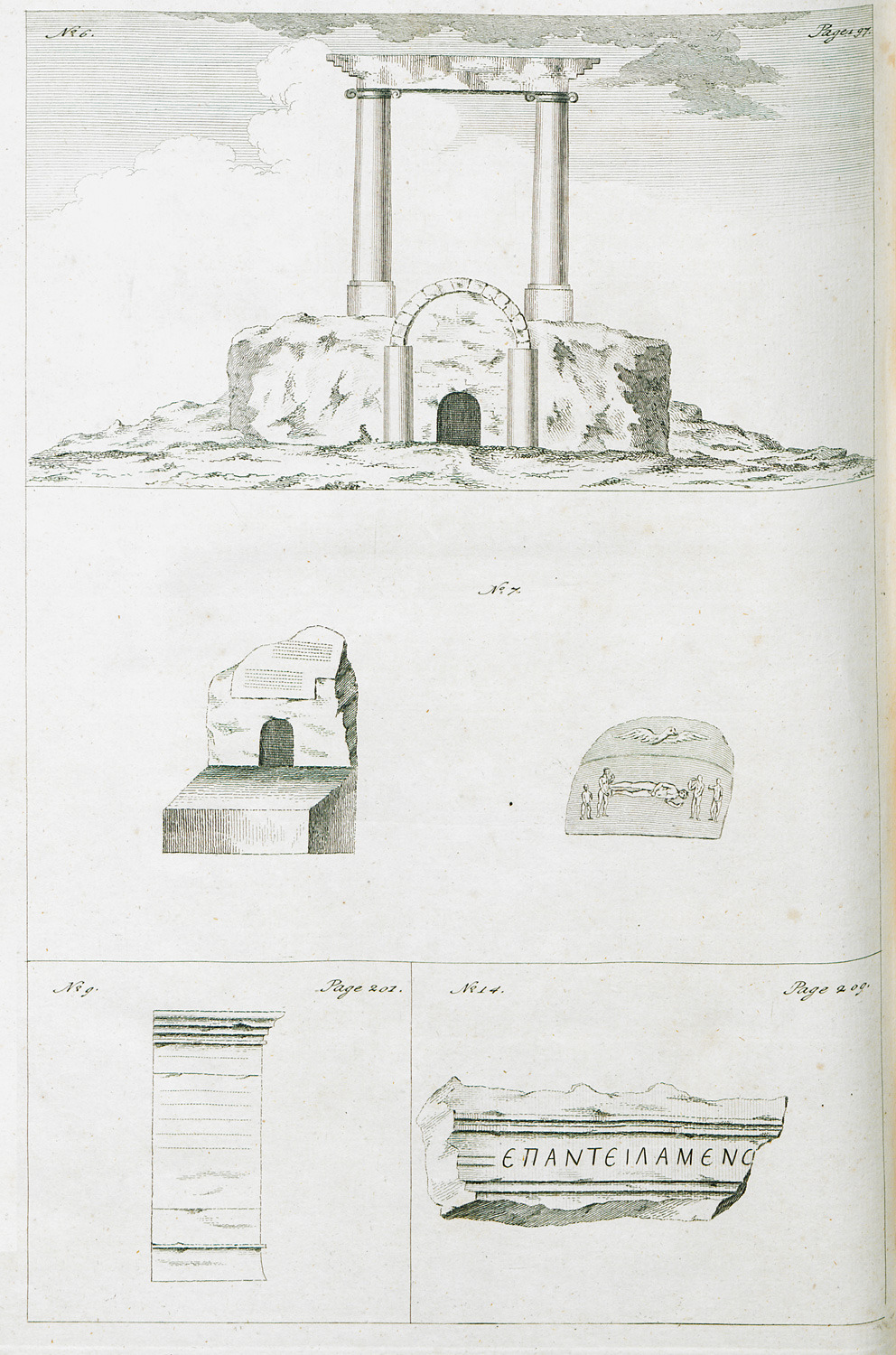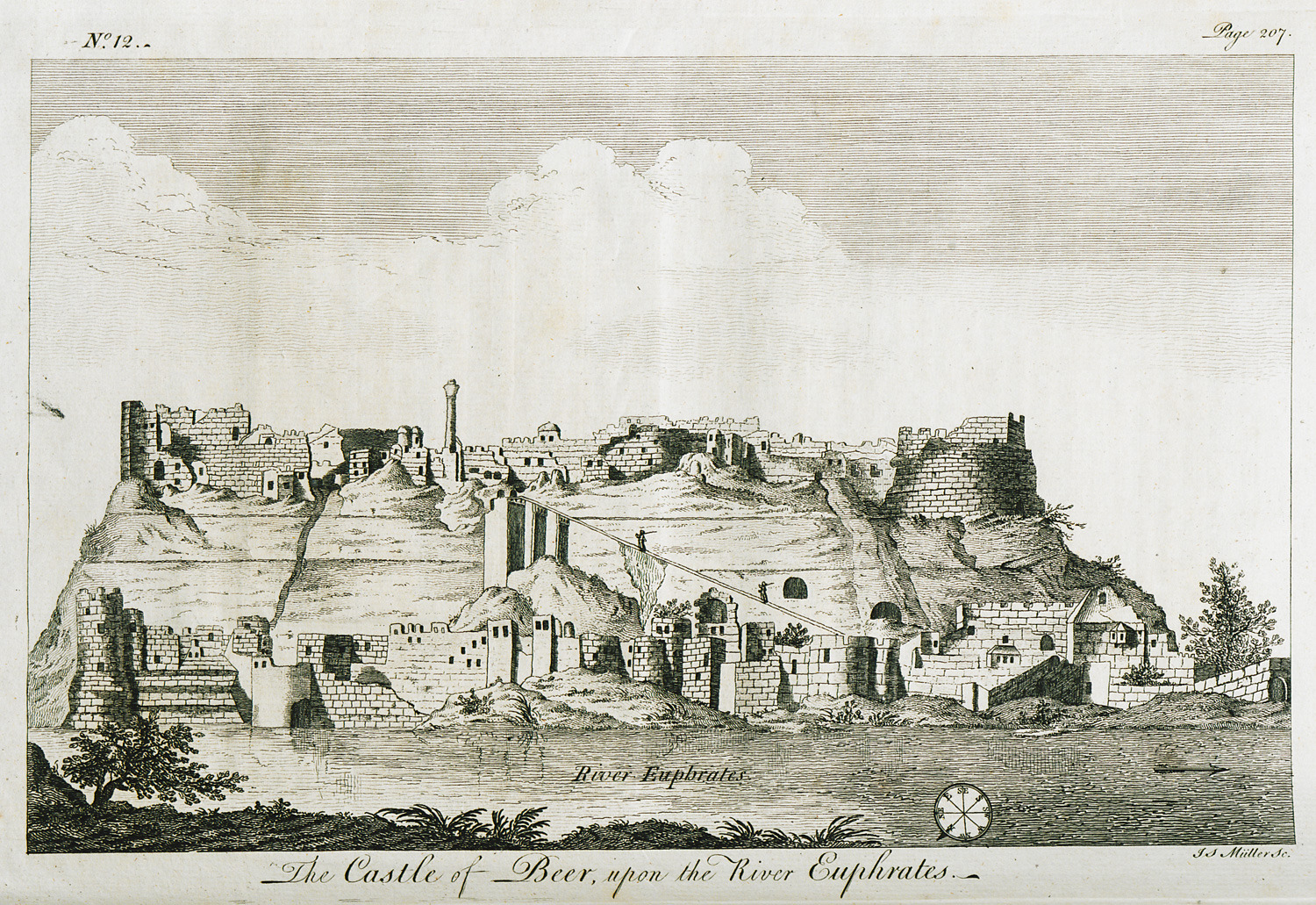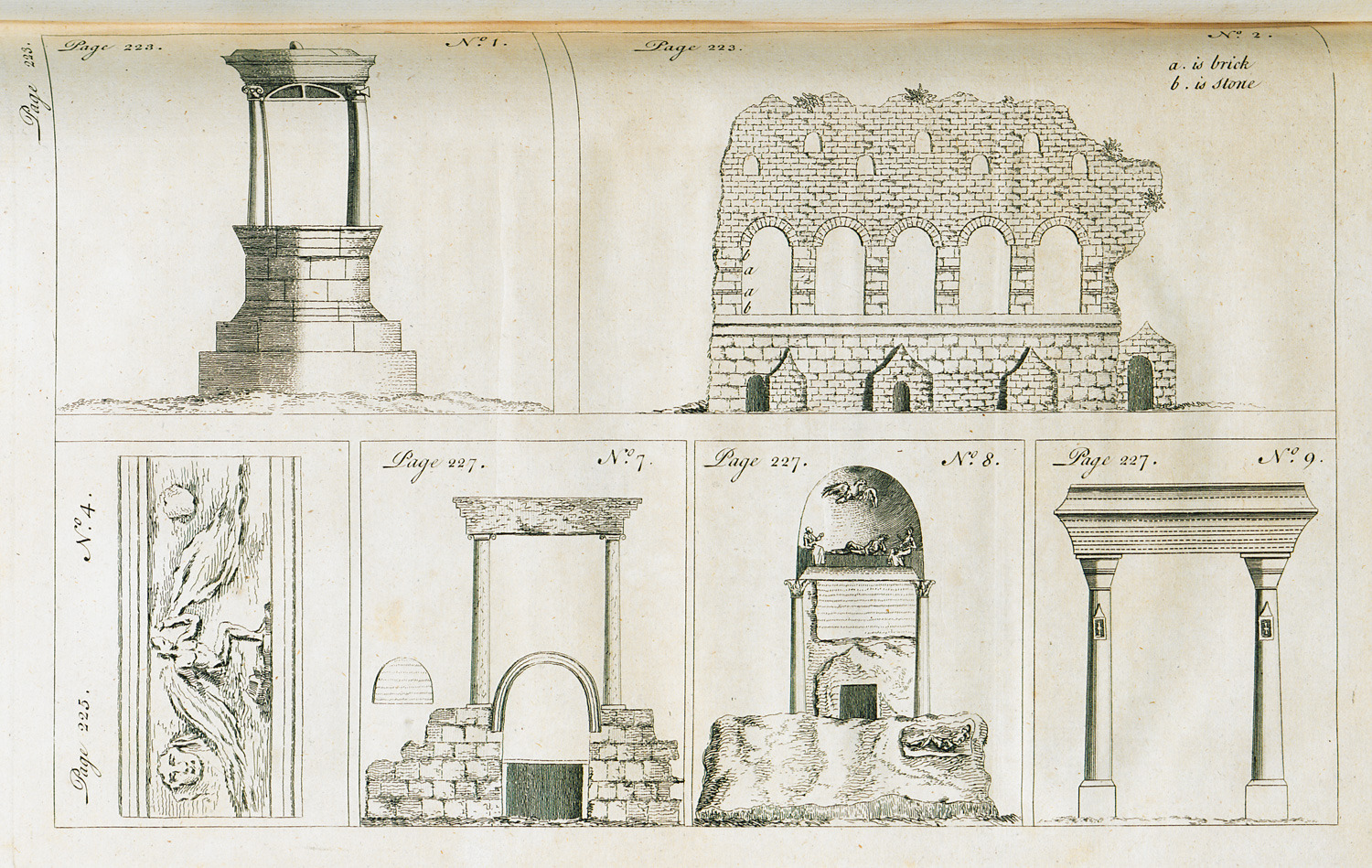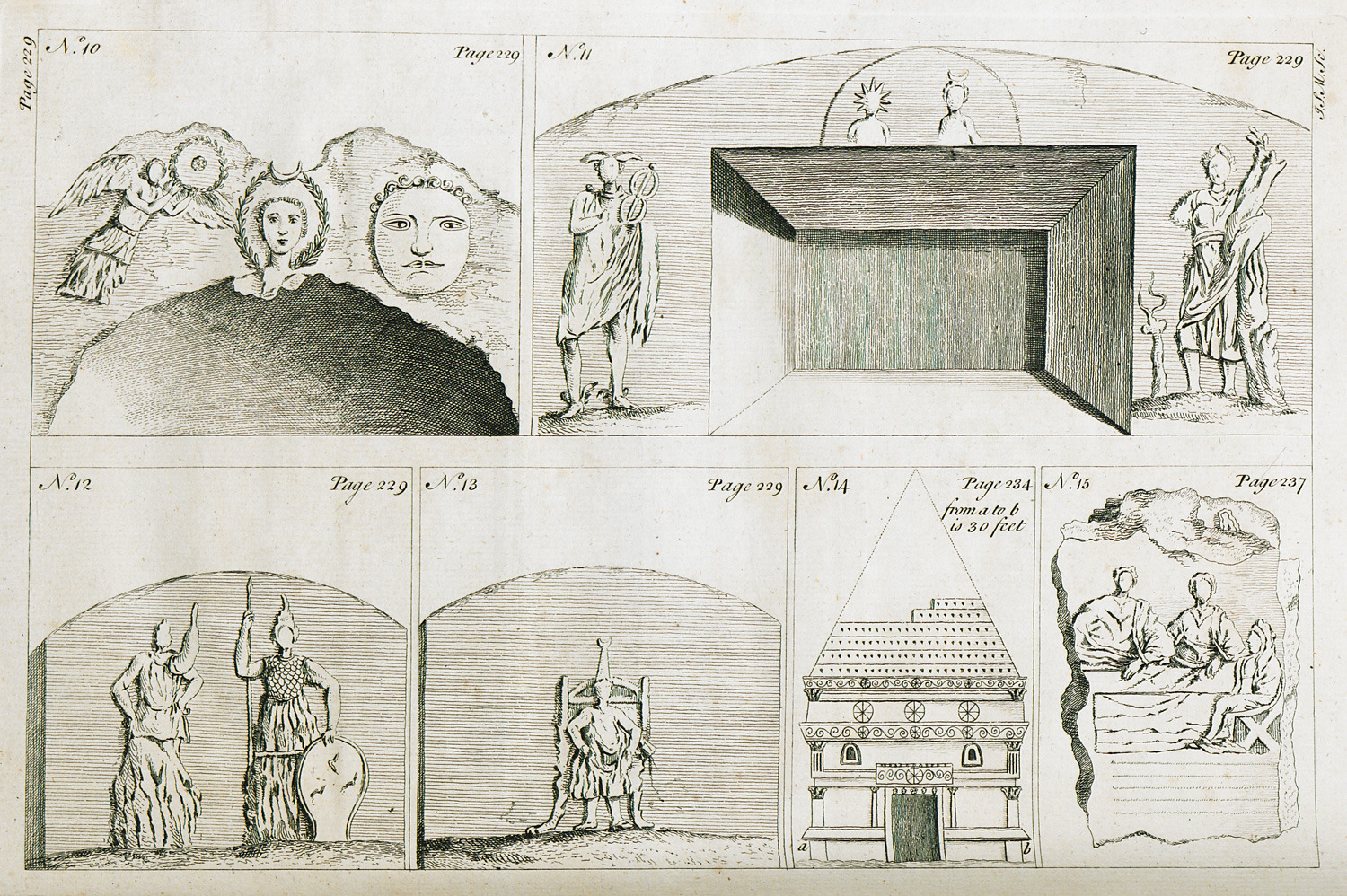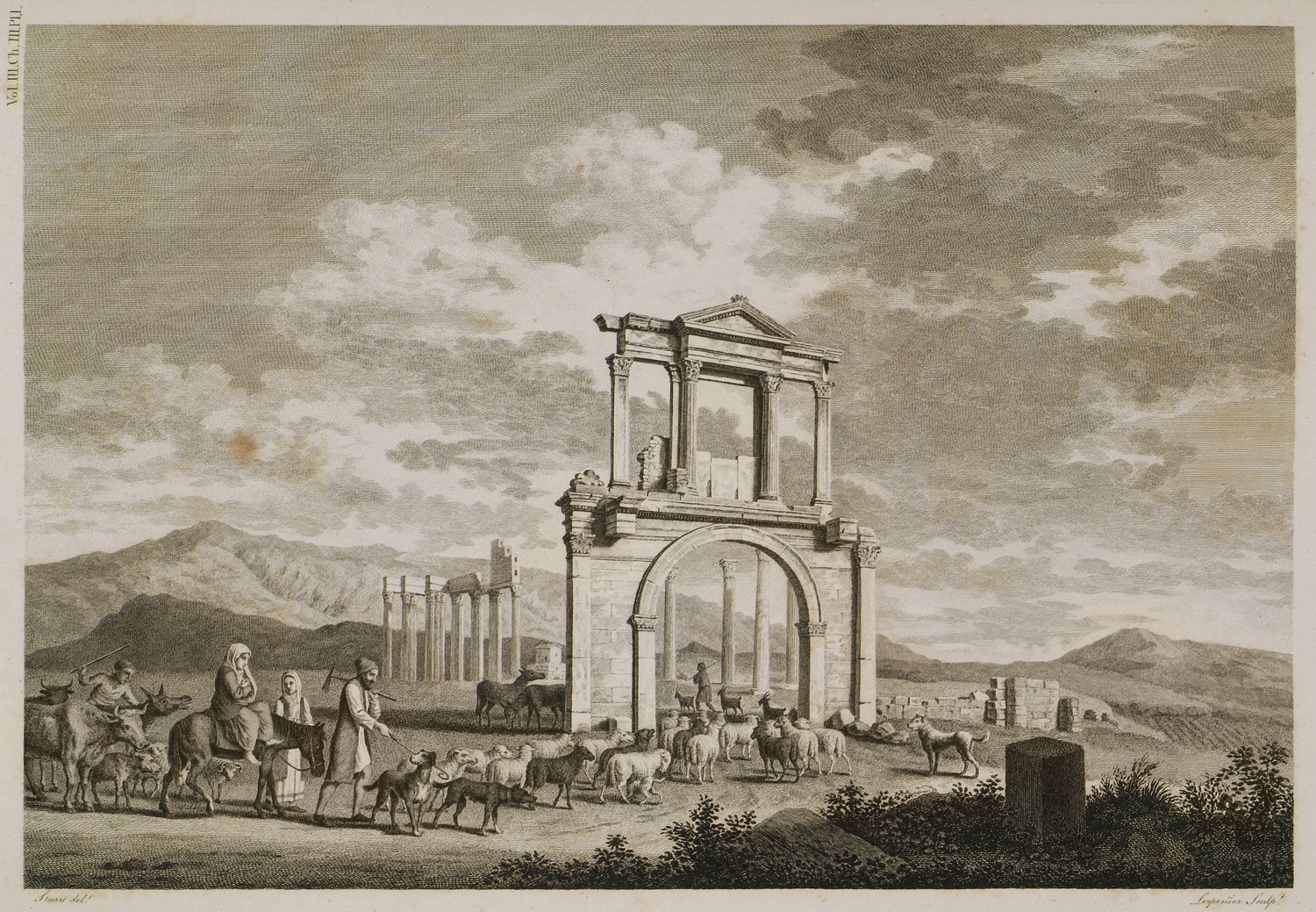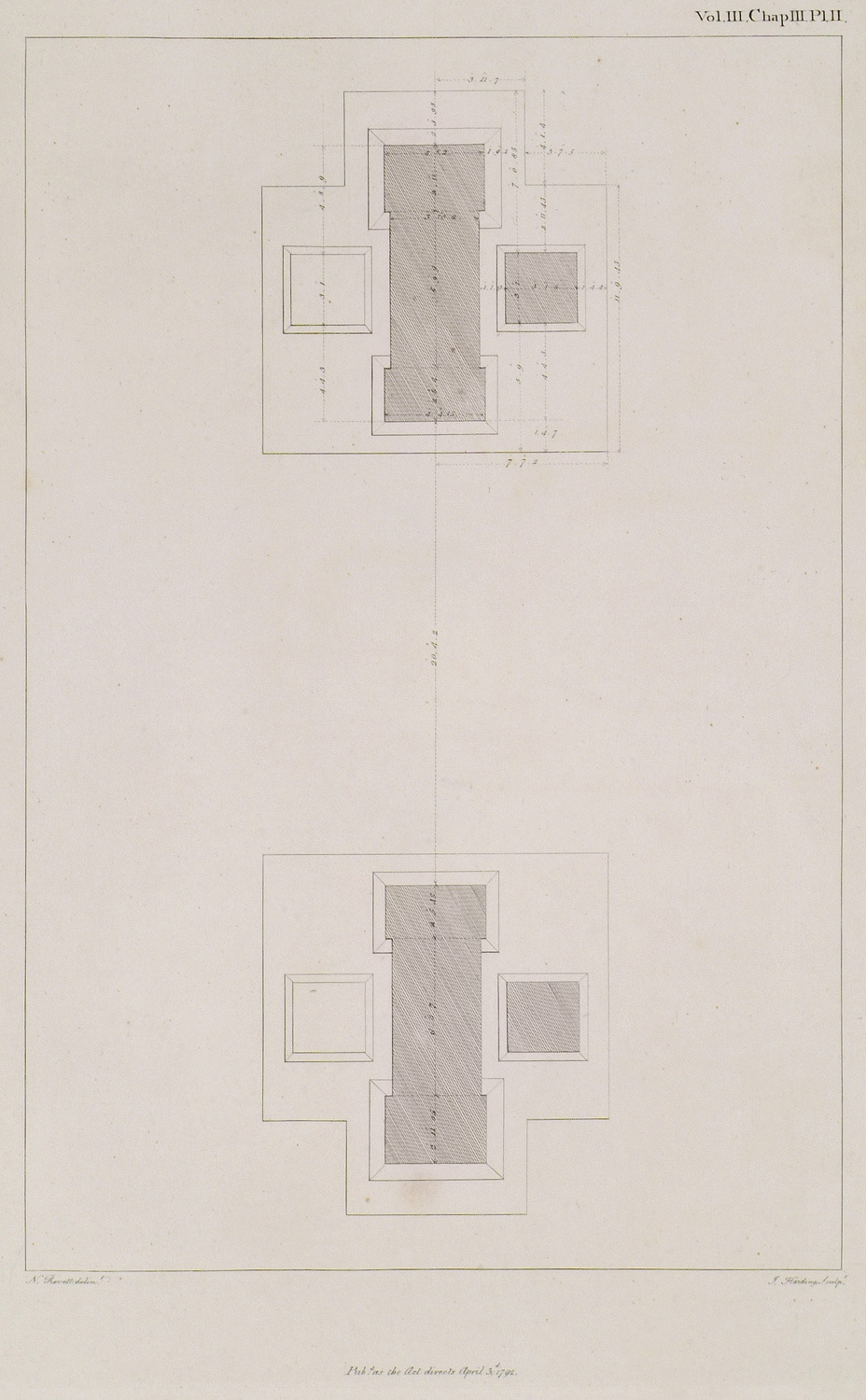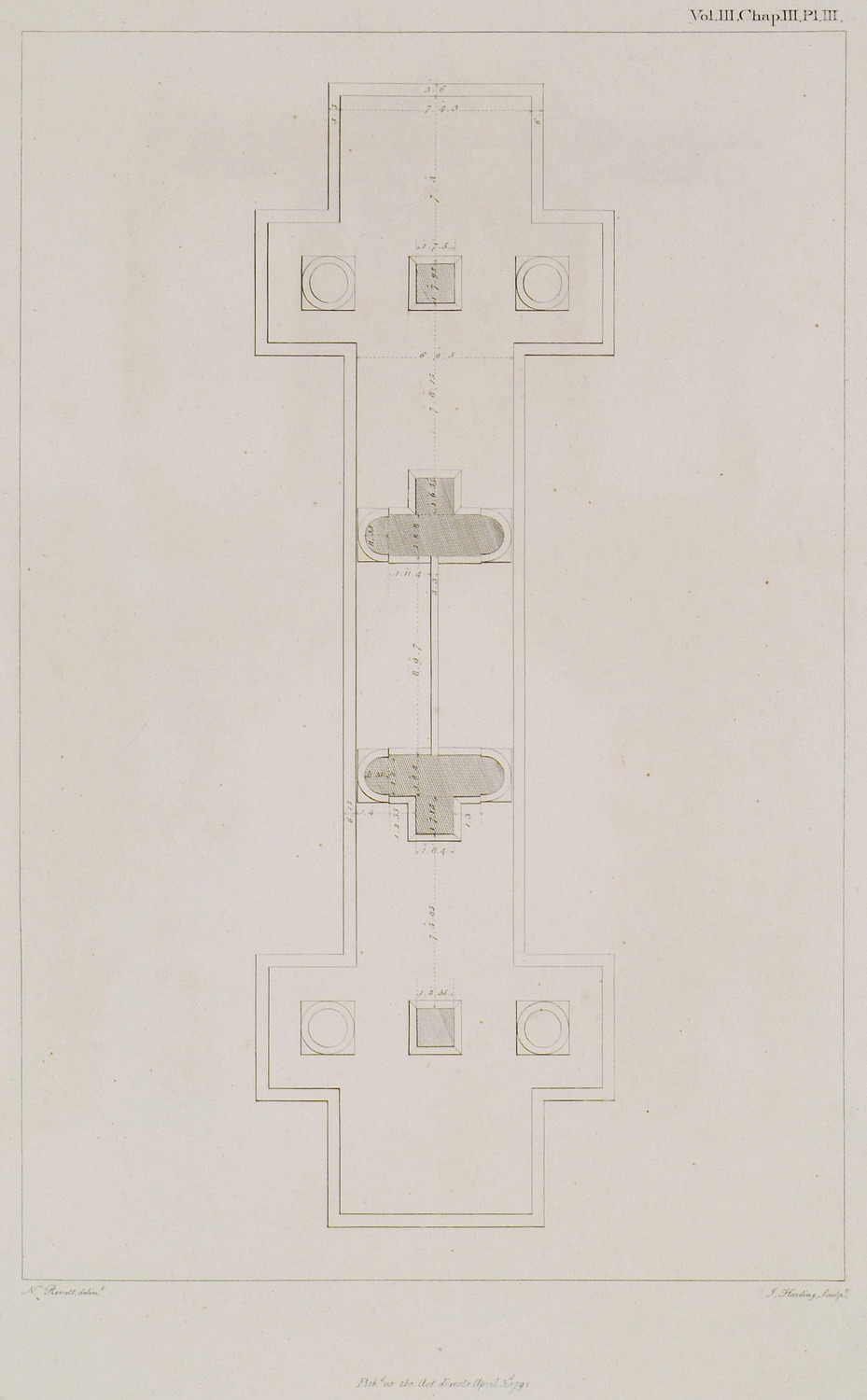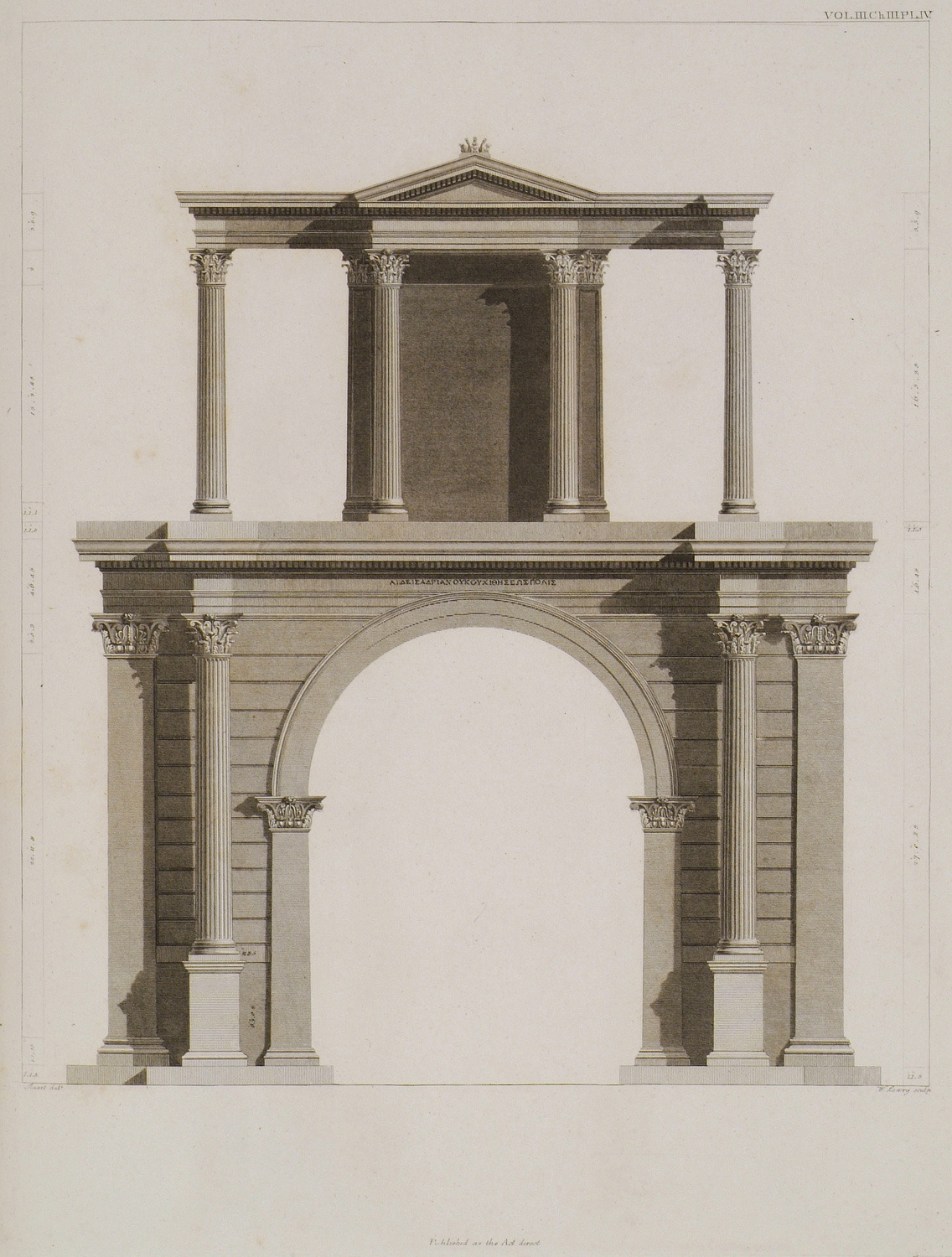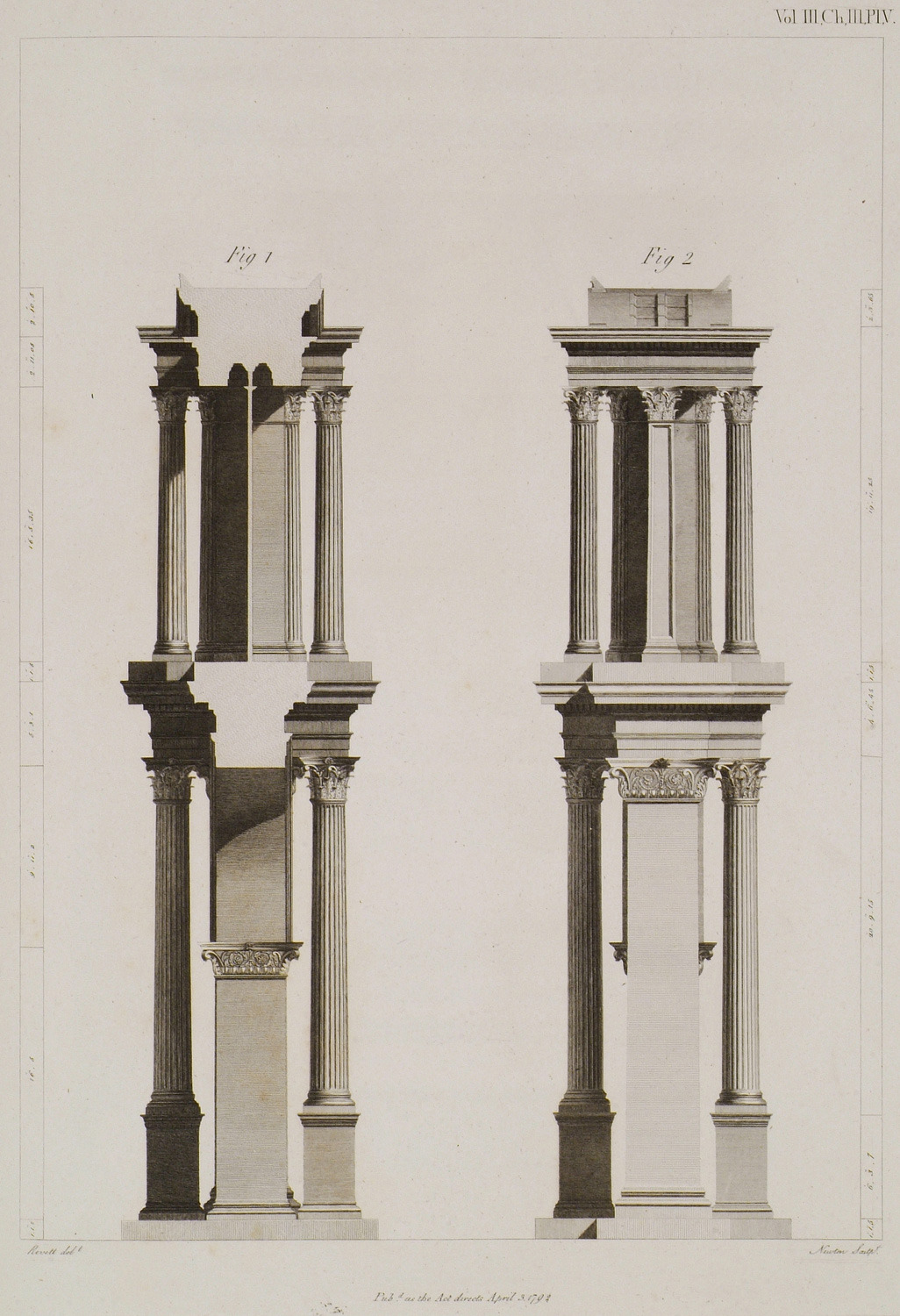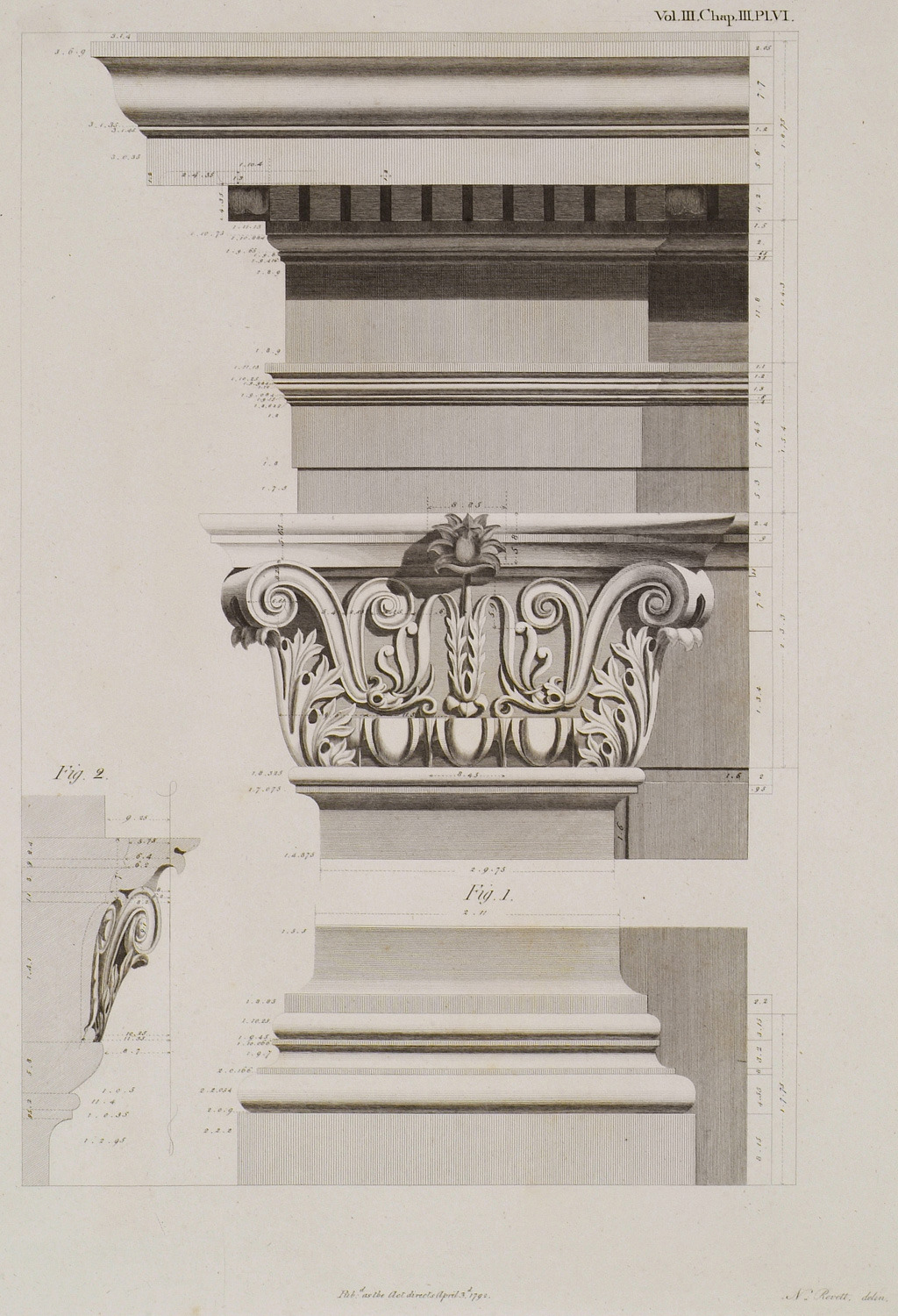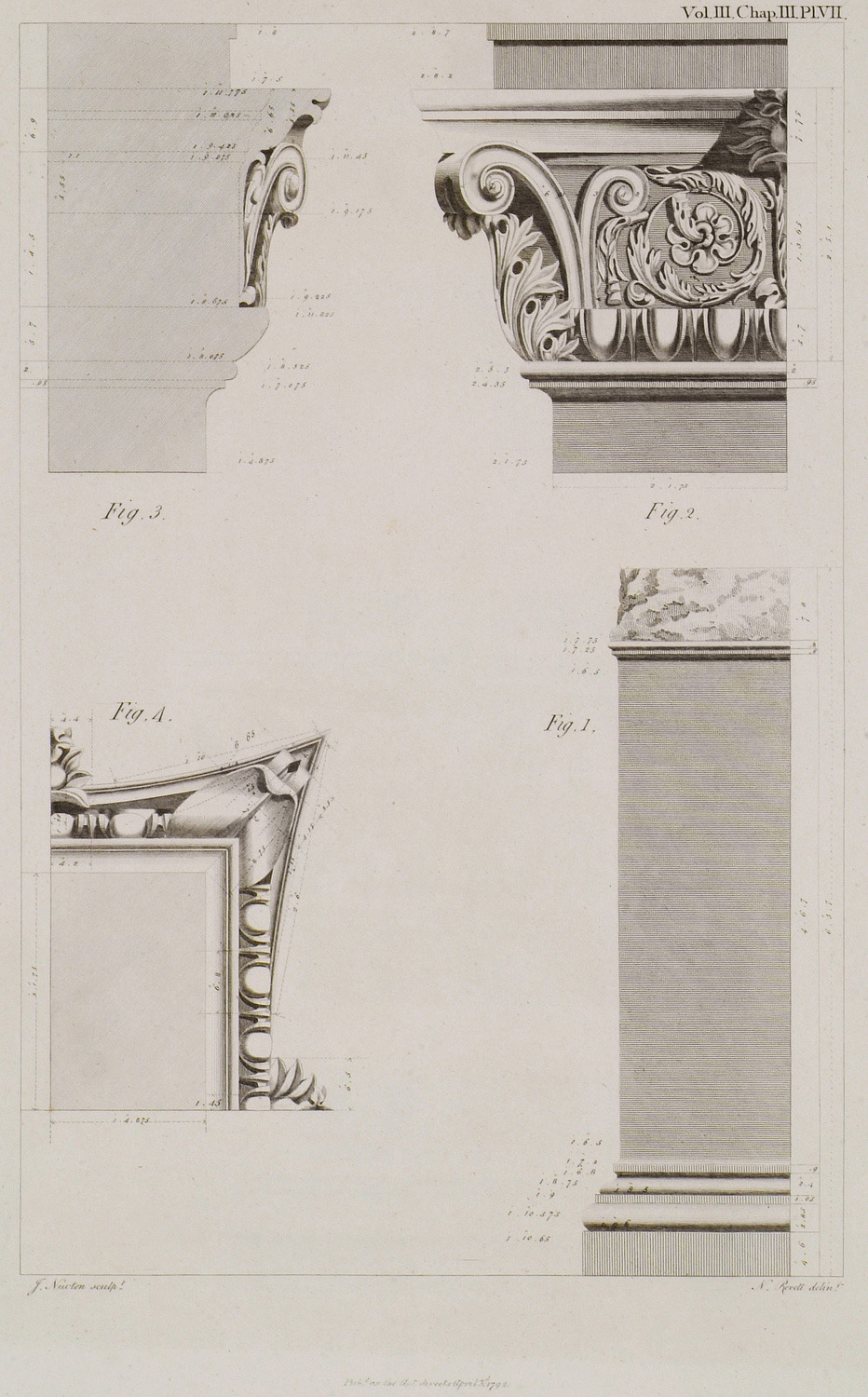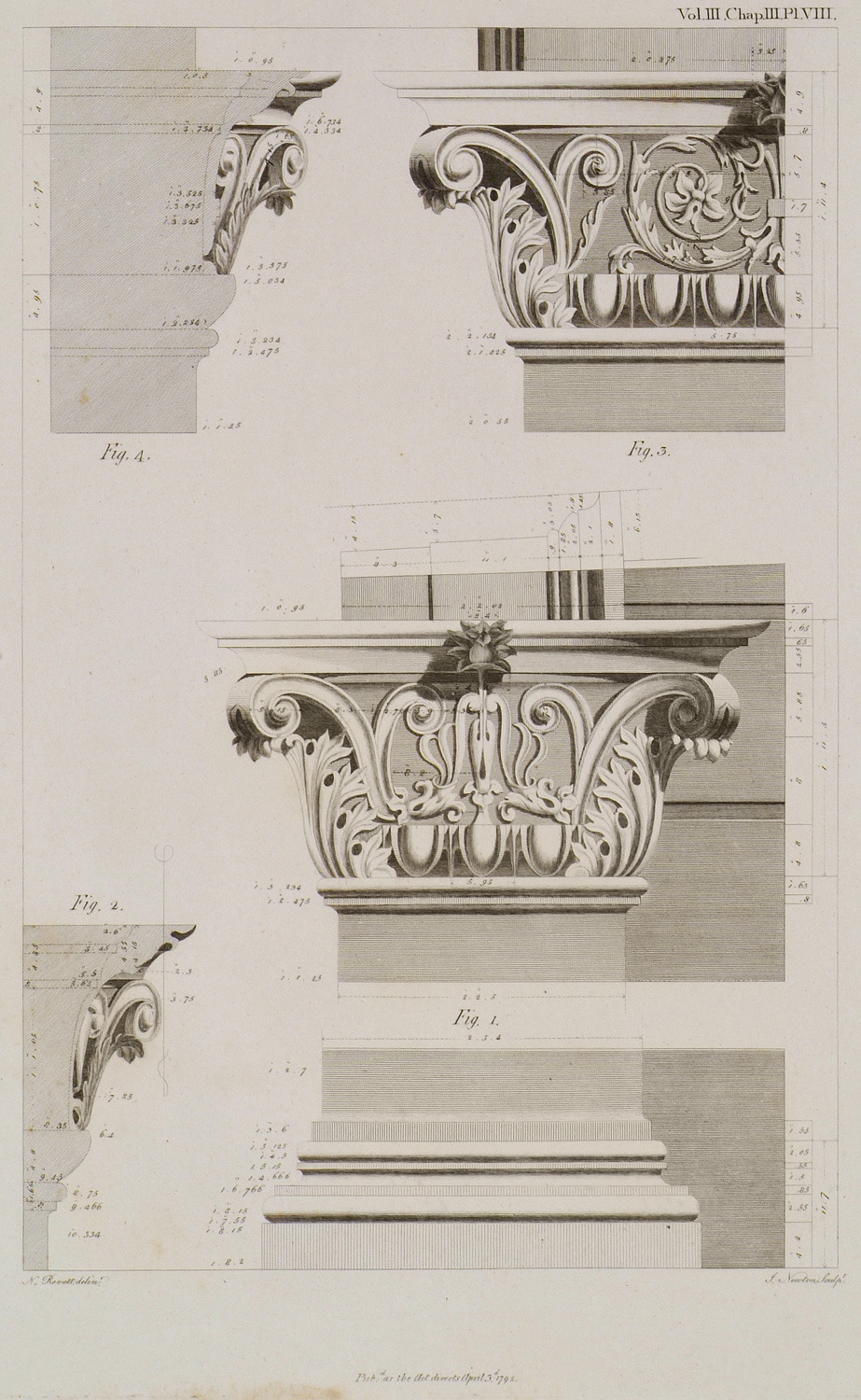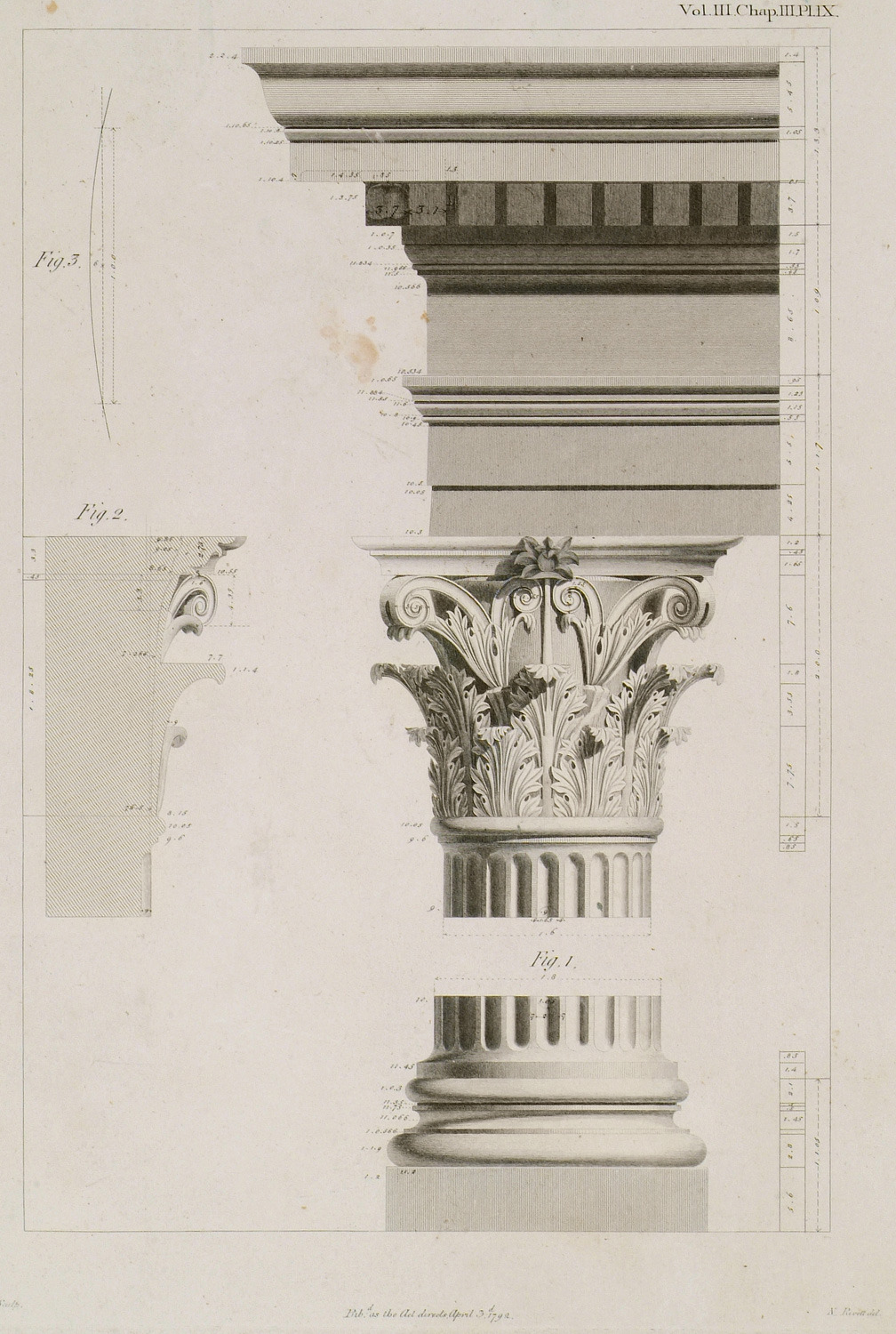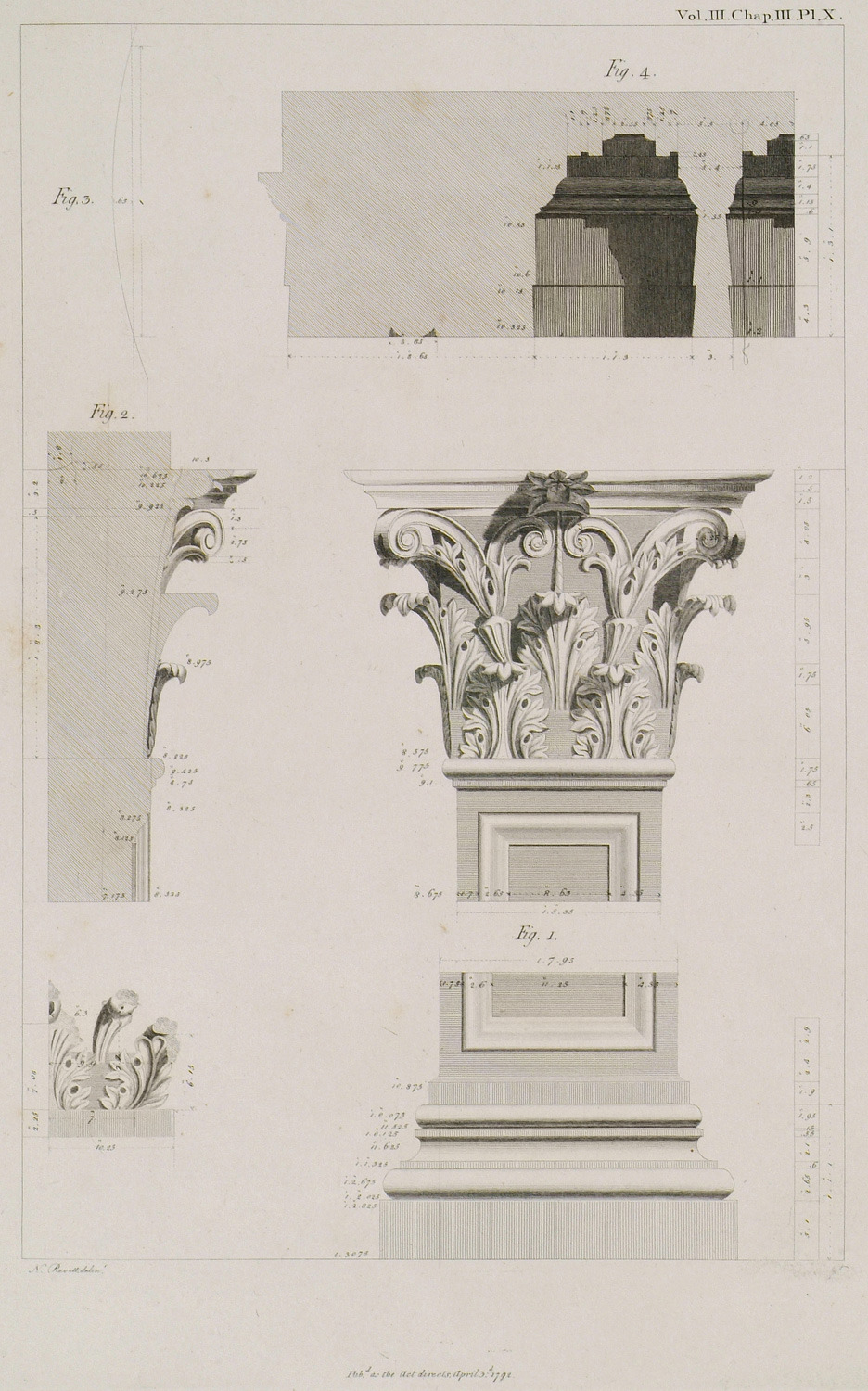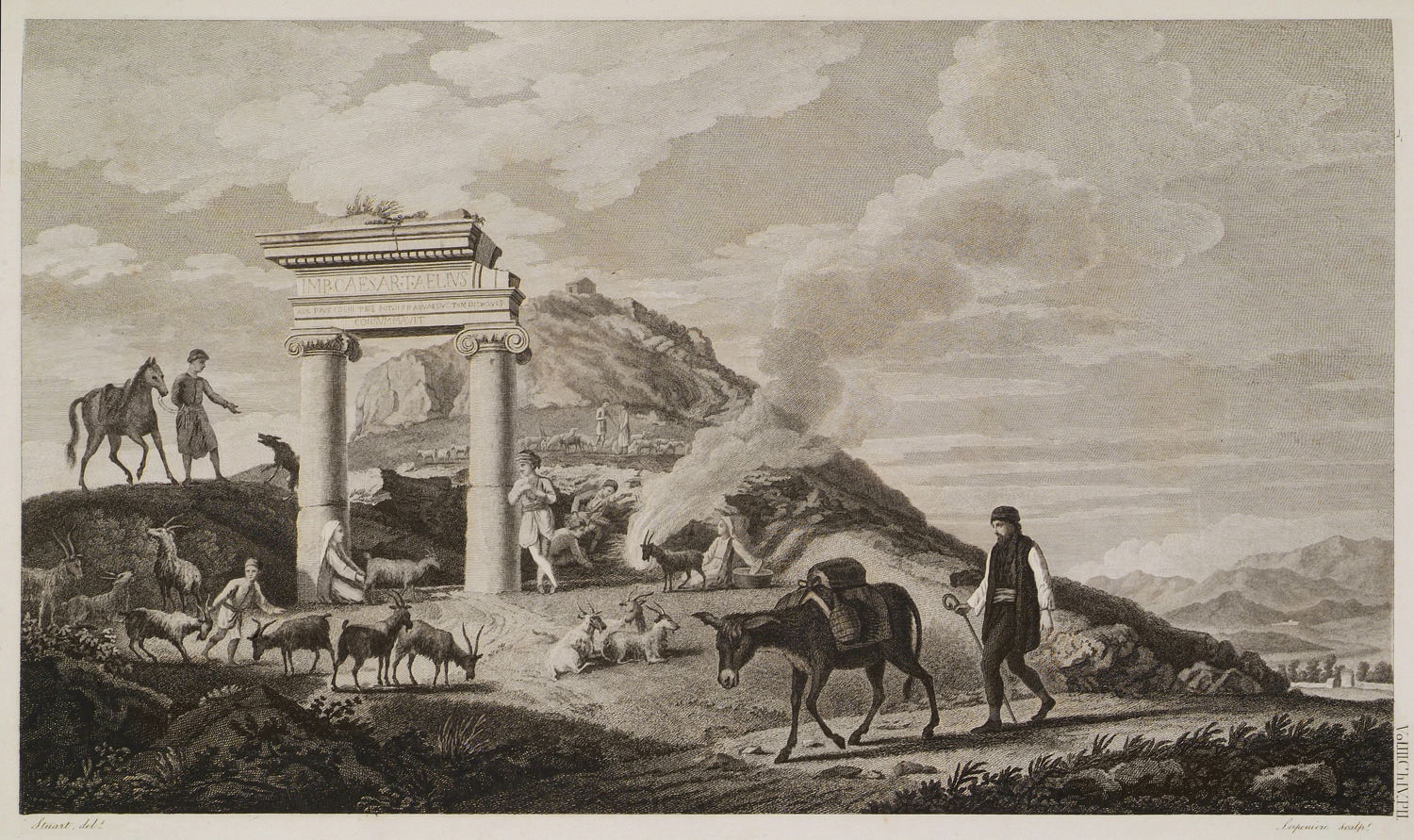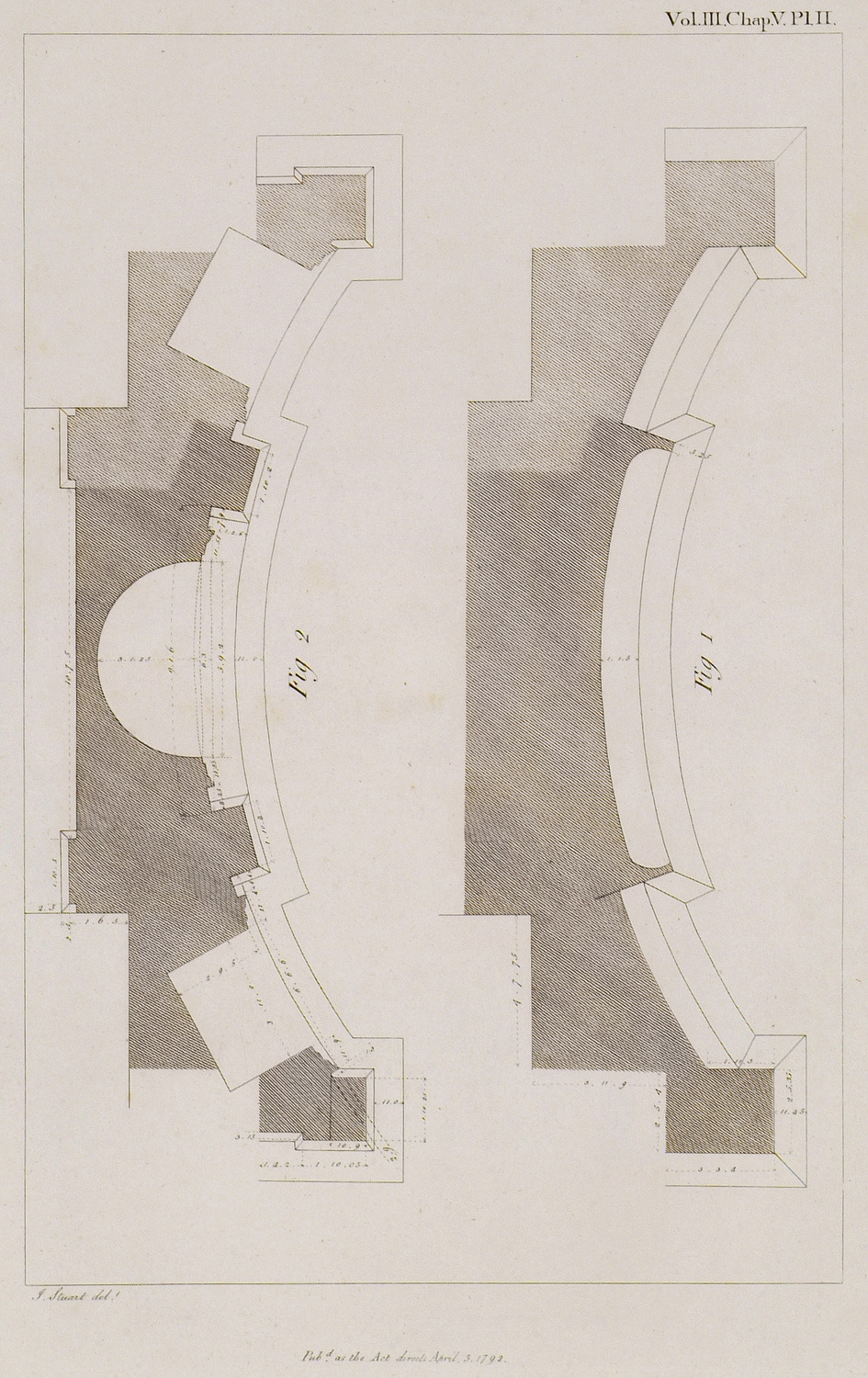Roman monuments (805 Subjects)
Temple of Rome and Augustus, Pula: The base and pedestal of the columns.
Temple of Rome and Augustus, Pula: Fig. 1: The capital of the pilasters or antae. Fig. 2: The section of the capital. Fig. 3: The plan of the capital reversed, ans soffit of the architrave. Fig. 4: The base of the pilaster.
The arch of the Sergii at Pula, Croatia. Peasants of Slavic ethnicity are walking by with their ox cart. James Stuart, Nicholas Revett and their assistant are on top of the arch, making drawings. On the left a man informs the women gathered that the travellers are searching the Arch of the Sergii for treasures.
Plan of the Arch of Sergii in Pula, Croatia.
Elevation of the Arch of Sergii in Pula, Croatia.
The flank and section of the Arch of Sergii in Pula, Croatia.
Arch of Sergii in Pula, Croatia: Fig. 1: The capital and entablature of the columns. Fig. 2: Section of the capital. Fig. 3: Soffit of the Corona.
Outlines of architectural features from the Arch of Sergii in Pula, Croatia.
Arch of Sergii in Pula, Croatia: Fig. 1: Plan of the capital reversed. Fig. 2: Angular view of the capital.
Arch of Sergii in Pula, Croatia: Fig. 1: Plan of the columns shewing the termination of the flutes. Fig. 2: Base and pedestal of the columns.
Arch of Sergii in Pula, Croatia: Fig. 1: The middle compartment in the soffit of the arch. Fig. 2: The impost mouldings, with the foliage ornament on its face, and the archivolt. Fig. 3: The pedestals over the entablature.
Arch of Sergii in Pula, Croatia: Trophies in the frieze on the Flanks of the Arch.
The Kızılçullu aqueduct on Meles river, near Izmir.
1. Chameleon. 2. Musical instrument. 3-4. The Arch of Septimus Severus at Latakia, Syria.
1. Corinthian columns of entrance to a catacomb at Shaykh Barakat, near Aleppo, Syria. 2. The entrance to the catacomb of a certain Roman soldier, together with funerary stele at Shaykh Barakat. 3. Stele from the Roman theater of Cyrrhus, ancient city near Aleppo. 4. Fragment of relief from Hierapolis.
The Birecik Castle, upon the river Euphrates.
1. Monumental building. 2. View of part of the wall of the temple of Saint Peter in Antakya, Turkey. 3. Funerary stele showing a gladiator in Samandağ (anc. Seleucia Pieria). 4. View of entrance leading to catacomb at Shaykh Barakat, near Aleppo. 5. View of funerary stele at the entrance of Shaykh Barakat. 6. View of gate at Shaykh Barakat.
1. Relief from entrance to a Roman Tomb, showing Apollo and Demeter, at the necropolis of Furkia. 2. Relief from entrance to a Roman Tomb, showing Hermes and Pheme, at the necropolis of Furkia. 3. Relief from entrance to a Roman Tomb, showing Ceres and Athena, at the necropolis of Furkia.4. Relief from entrance to a Roman Tomb, showing a priest, at the necropolis of Furkia. 5. Reconstructive drawing of building at Al Bara, near Aleppo. 6. Relief found at the entrance of the library of the Levant Company (or East Company) at Aleppo, Syria.
The Arch of Hadrian in Athens with the temple of Olympian Zeus. The temple of Artemis Agrotera in the background. Arvanite shepherds are taking their sheep to graze.
Plan of the lower part of Hadrian's Arch, Athens.
Plan of the upper part of the Arch of Hadrian, Athens.
The Arch of Hadrian, Athens: Elevation of the fronts facing the south-east.
The Arch of Hadrian, Athens: Fig. 1. Section through the centre of the arch, and of the niches. Fig. 2. Elevation of one end of the arch, showing the connection of the columns in the second order.
The Arch of Hadrian, Athens: Fig. 1. Capital and base of the antae at each extremity of the arch, with the entablature of the lower order of the building, as seen on each front. Fig. 2. A section through the front face of the capital.
The Arch of Hadrian, Athens: Fig. 1: Half the front of the pedestals in the lower order. Fig. 2: Half the front of the capital of the antae on the flank of the arch. Fig. 3: A section through the front of the capital. Fig. 4: The plan of half the front face, and half the flank face of the capital.
The Arch of Hadrian, Athens: Fig. 1: The front of the capital, and base of the antae that support the arch, with the profile mouldings of the archivolt. Fig. 2: The section through the front of the capital. Fig. 3: Half the lateral face of the capital. Fig: 4. The section of the lateral face of the capital.
The Arch of Hadrian, Athens: Fig. 1. The capital and base of the half columns in the upper order of the arch, with the entablature they support. Fig 2. Section through the capital. Fig. 3. Curve of the abacus of the capital, taken on its listel.
The Arch of Hadrian, Athens: Fig. 1. The capital and base of the Attic square columns on the upper order. Fig. 2. A section through the capital. Fig. 3. The curve of the abacus; of the capital taken upon the listel under the ovolo. Fig. 4. A section of the architrave, and lacunaria, in the soffit of the niches, with the partition between them, which still remains as low as to the bottom of the capitals. Fig. 5. Half the flower upon the apex of the pediment, in its present state.
Remains of the portico of the reservoir of the Aqueduct of Hadrian (Dexameni) at the foot of Lycabettus hill. Dairy farm belonging to Arvanites. A woman is milking her goat to make kaymak. A man has come on horseback to buy dairy products. A monk of Hagioi Asomatoi monastery is going to town with his donkey which is carrrying olives and wine. Mount Hymettus and Kaisariani monastery in the background.
Monument of Philopappus, Athens: Fig. 1: Plan of the basement. Fig. 2: Plan of the part decorated with pilasters and niches.


